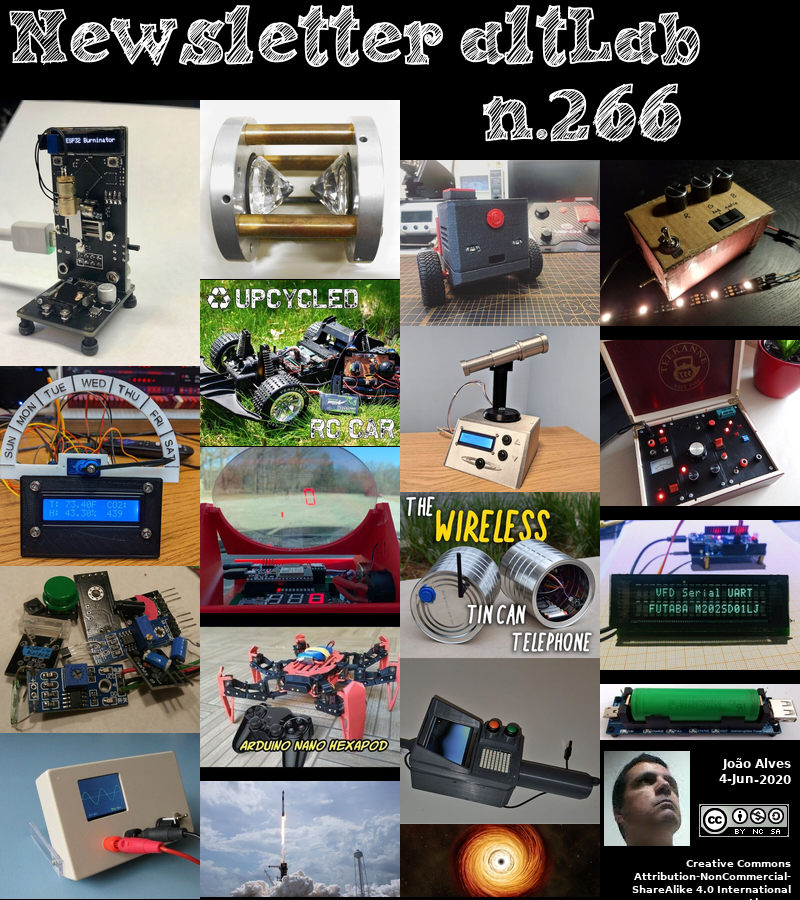2020-06-04 - Nº 266
Editorial
Esta é a Newsletter Nº 266 que se apresenta com o mesmo formato que as anteriores. Se gostar da Newsletter partilhe-a!
Todas as Newsletters encontram-se indexadas no link.
Esta Newsletter tem os seguintes tópicos:
Faz hoje anos que nascia, em 1756 o químico francês Jean-Antoine Chaptal. Ele foi o autor do primeiro livro sobre química industrial. Foi também ele que deu o nome "nitrogénio". A sua actividade técnica abrangeu um amplo campo, como melhorias na fabricação de ácido sulfúrico, salitre para pólvora, açúcar de raiz de beterraba, vinho, tingimento, branqueamento entre outras coisas. Ele foi o primeiro a produzir comercialmente ácido sulfúrico na França na sua fábrica em Montpellier. A sua carreira abrangeu o período tempestuoso da Revolução Francesa. Ele foi preso, mas teve mais sorte do que o brilhante Antoine Lavoisier (que foi guilhotinado) e depois libertado para gerir as obras de salitre em Grenelle. Ele também ajudou a organizar a introdução do sistema métrico.
Faz também hoje anos que nascia, em 1877, o químico alemão Heinrich Otto Wieland. Ele ganhou do Prémio Nobel de Química de 1927 pelos seus estudos de química de esteróides, nos quais determinou a estrutura molecular dos ácidos biliares. Ele também é conhecido por estudar a conversão de alimentos em energia. Em 1912, ele começou a trabalhar em ácidos biliares, secreções do fígado conhecidas há quase um século por consistirem num grande número de substâncias. Ele estudou três deles: ácido cólico, ácido desoxicólico e ácido litocólico, descobrindo que todos eram esteróides, muito semelhantes entre si, e todos convertíveis em ácido colânico. Depois de 1921, ele estudou alguns alcalóides curiosos, incluindo toxiferina (ingrediente activo do curare), bufotalina (no veneno de sapos) e faloidina e amatina (ingredientes venenosos no mortífero cogumelo amanita).
Por fim, faz anos hoje que nascia, em 1910, o inventor inglês Christopher Cockerell. Ele é responsável pela invenção do hovercraft. Ele era engenheiro electrotécnico na Marconi Company (1935-50), onde trabalhou em equipamentos de navegação aérea e radar. Posteriormente ele criou um negócio de aluguer de barcos. Considerando o arrasto da água no casco de um barco, ele teve a ideia de elevar o barco numa almofada de ar. Em 1954, ele realizou um teste crucial usando balanças de cozinha, latas e um aspirador de pó para mostrar que uma corrente de ar poderia produzir a elevação necessária. No ano seguinte, ele construiu um modelo de madeira balsa em funcionamento com um motor de aeronave. O primeiro protótipo em escala real, o SR-N1, pesava 7 toneladas e era capaz de 60 nós. Atravessou o Canal da Mancha em 1959 (com Cockerell a bordo). O Hovercraft entrou em serviço regular entre canais em 1968.
Nesta semana que passou, e após um adiamento de dias, foi finalmente lançado o foguetão da SpaceX, com dois astronautas a bordo, em direcção à estação espacial internacional. No dia 30 cumpriu-se mais um passo histórico na conquista espacial quando astronautas norte-americanos foram lançados dentro de um foguetão comercial. A nave Crew Dragon transportou Robert Behnken e Douglas Hurley, sendo a primeira missão de teste com tripulantes humanos. Denominada de SpaceX Demo-2 esta missão tem como objectivo testar o voo do inicio ao fim para validar a capacidade de transporte de tripulação, durante o lançamento, em órbita, na acoplagem e na aterragem.
Também nesta semana que passou foi lançado o Kernel 5.7 do Linux. Depois de sete RC foi dado o "sign-off" para a primeira versão oficial desta familiar de Kernels. As principais novidades são melhorias diversas na arquitectura ARM de 64-bits, melhoria do suporte de HDR/OLED nomeadamente o controlo do Backlight, foram também introduzidas melhorias diversas no sistema de I/O, novo driver de filesystem exFAT, actualizações dos filesystems F2FS, XFS e Btrfs, suporte para o Apple USB Fast Charge, suporte para novos dispositivos de hardware de som, assim como muitas outras melhorias.
Na Newsletter desta semana apresentamos diversas noticias, artigos científicos assim como projetos de maker.
 João Alves ([email protected])
João Alves ([email protected])
O conteúdo da Newsletter encontra-se sob a licença  Creative Commons Attribution-NonCommercial-ShareAlike 4.0 International License.
Creative Commons Attribution-NonCommercial-ShareAlike 4.0 International License.
Novidades da Semana

NASA Astronauts Launch from America in Historic Test Flight of SpaceX Crew Dragon
"For the first time in history, NASA astronauts have launched from American soil in a commercially built and operated American crew spacecraft on its way to the International Space Station. The SpaceX Crew Dragon spacecraft carrying NASA astronauts Robert Behnken and Douglas Hurley lifted off at 3:22 p.m. EDT Saturday on the company’s Falcon 9 rocket from Launch Complex 39A at NASA’s Kennedy Space Center in Florida. “Today a new era in human spaceflight begins as we once again launched American astronauts on American rockets from American soil on their way to the International Space Station, our national lab orbiting Earth,” said NASA Administrator Jim Bridenstine. “I thank and congratulate Bob Behnken, Doug Hurley, and the SpaceX and NASA teams for this significant achievement for the United States. The launch of this commercial space system designed for humans is a phenomenal demonstration of American excellence and is an important step on our path to expand human exploration to the Moon and Mars.” Known as NASA’s SpaceX Demo-2, the mission is an end-to-end test flight to validate the SpaceX crew transportation system, including launch, in-orbit, docking and landing operations. This is SpaceX’s second spaceflight test of its Crew Dragon and its first test with astronauts aboard, which will pave the way for its certification for regular crew flights to the station as part of NASA’s Commercial Crew Program." [...]

Linux Kernel 5.7 Released: The Top 10 New Features You Should Know
"After seven release candidates, Linus Torvalds has officially announced the final stable version of Linux Kernel 5.7. The latest release succeeds the previous Linux Kernel 5.6 including all the changes pulled out during the kernel 5.7 merge window. Linux Kernel 5.7: What’s New? Linux 5.7 packs several exciting new changes and enhancements to existing components. It ranges from processor support like Qualcomm Snapdragon 865 to exFAT file systems and other hardware support. Here, I’m listing the top 10 new features of Linux Kernel 5.7 that you might be interested to know the most: 1." [...]
Outras Notícias
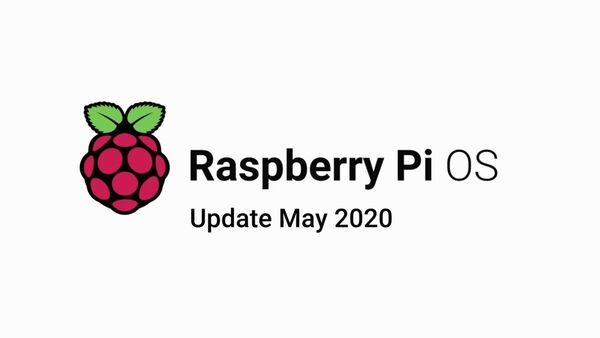
Latest Raspberry Pi OS update – May 2020
"Along with yesterday’s launch of the new 8GB Raspberry Pi 4, we launched a beta 64-bit ARM version of Debian with the Raspberry Pi Desktop, so you could use all those extra gigabytes. We also updated the 32-bit version of Raspberry Pi OS (the new name for Raspbian), so here’s a quick run-through of what has changed. Bookshelf As many of you know, we have our own publishing company, Raspberry Pi Press, who publish a variety of magazines each month, including The MagPi, HackSpace magazine, and Wireframe. They also publish a wide range of other books and magazines, which are released either to purchase as a physical product (from their website) or as free PDF downloads. To make all this content more visible and easy to access, we’ve added a new Bookshelf application – you’ll find it in the Help section of the main menu. Bookshelf shows the entire current catalogue of free magazines – The MagPi, HackSpace magazine and Wireframe, all with a complete set of back issues – and also all the free books from Raspberry Pi Press." [...]
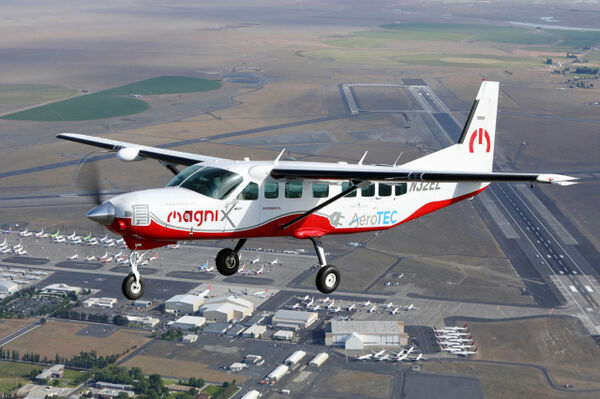
Modified Cessna is the 'largest' electric aircraft to take flight
"There were some compromises involved in taking to the skies. Electric aircraft are ever so slightly closer to becoming a practical reality for travel. Magnix and AeroTEC have flown what they say is the world’s largest all-electric aircraft. Their modified Cessna 208B Grand Caravan, the “eCaravan,” flew for 30 minutes around Washington state’s Grand County International Airport using Magnix’s 750HP Magni500 motor instead of the usual turboprop engine. The flight was “flawless,” Magnix chief Roei Ganzarski said in a statement to FlightGlobal. There are compromises." [...]
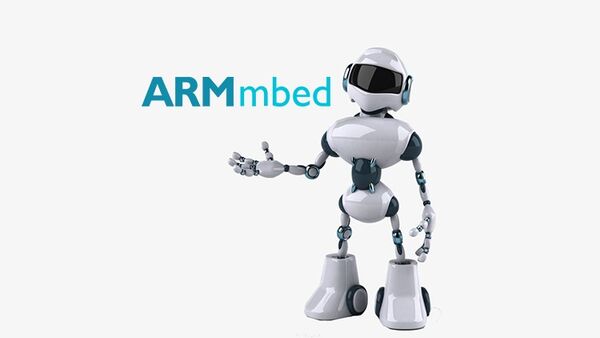
Arm Mbed OS 6.0 released today
"The Arm Mbed team is delighted to announce the release of Mbed OS 6, our first major release in almost four years. We have invested heavily to add the features required for today’s IoT devices, and to back those features up with state of the art tooling to simplify development of IoT and embedded products. You can use Mbed OS 6 now in Mbed Studio, the Mbed Online Compiler, Mbed CLI and directly from the Mbed OS GitHub repository. This blog covers: Stable and mature APIs Board support for the most popular boards Custom hardware Community supported boards Bare Metal Profile Cloud services support Stable and mature APIs Today’s release lays down the foundations for the next wave of innovation in IoT, providing a set of developer APIs that are fit-for-purpose, validated by widespread use in IoT products, and supported for the long term to ensure stability. We have implemented a new API lifecycle that gives you more visibility and confidence in the maturity of our public APIs, and the first APIs to carry the ‘Experimental’ label are released in Mbed OS 6. Board support for the most popular boards We have worked closely with many of our valued Mbed partners to migrate the most widely used developer boards to support Mbed OS 6 at launch." [...]

Anaconda and IBM Watson Team to Simplify Enterprise Adoption of AI Open-Source Technologies
"Anaconda, Inc., provider of the leading Python data science platform, and IBM Watson (NYSE: IBM) today announced a new collaboration to help simplify enterprise adoption of AI open-source technologies. By working together, the two companies plan to help fuel innovation and address the AI and data science skills gap that many enterprises face today. Today, we see that data scientists rely on open-source technologies for innovation and to tap into a wealth of AI skills and talent. However, using open-source in the enterprise could be complex to adopt and manage from both a technical and operational standpoint. To help enterprises overcome this challenge, Anaconda Team Edition repository will be integrated with IBM Watson Studio on IBM Cloud Pak for Data, enabling organizations to better govern and speed the deployment of AI open-source technologies across any cloud. Additionally, Anaconda’s community of 20 million users will now be able to access a no-charge lite plan of Watson Studio[1], offering the opportunity to manage their data science projects within IBM’s enterprise grade environment." [...]
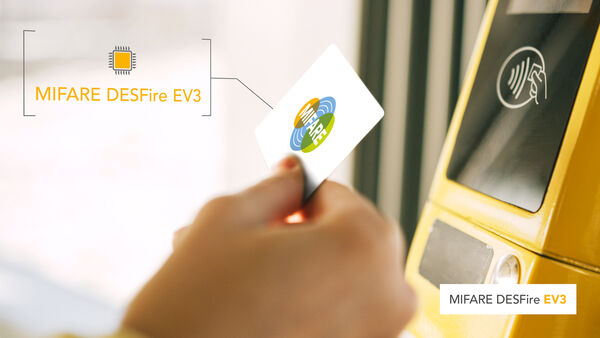
NXP Introduces MIFARE DESFire EV3 IC, Ushers In New Era of Security and Connectivity for Contactless Smart City Services
"NXP Semiconductors N.V. (NASDAQ: NXPI) today announced its new MIFARE DESFire EV3 IC that ushers in next-generation performance, advanced security and seamless integration of mobile services for a new era of security and connectivity in smart city services. As the third evolution of NXP’s proven contactless MIFARE DESFire portfolio, the latest IC is backwards compatible and offers enhanced performance with a greater operating distance and improved transaction speed. In combination with its advanced security features, the new IC delivers faster, more secure transactions that are truly contactless, such as paying for parking, accessing offices or campuses and using other essential city services—all touch-free. With proven success over the past 25 years, NXP’s MIFARE product portfolio is at the heart of smart city installations worldwide. The MIFARE DESFire EV3 IC builds upon the portfolio’s heritage of powering mass transit ticketing by also delivering the next level of convenience for end users and reliability for service providers. NXP’s IC provides multi-application support and delivers a wide array of enhanced features that allows transit agencies, access control solution providers, and system integrators to collaborate on new business models and scale their services." [...]
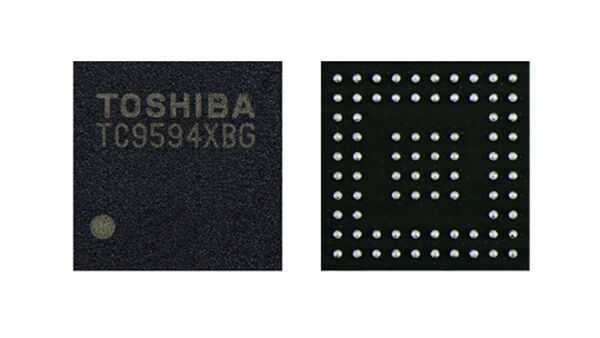
Toshiba Adds Automotive Display Interface Bridge ICs for In-Vehicle Infotainment Systems
"Toshiba Electronic Devices & Storage Corporation (“Toshiba”) has added “TC9594XBG” and “TC9595XBG,” new interface bridge ICs for automotive In-Vehicle Infotainment (IVI) systems, to its lineup of display interface bridge ICs. Sample shipments start this month. Automotive IVI systems are becoming increasingly sophisticated, and as the number of displays they incorporate grows, so too do panel choices, moving beyond the widely used LVDS display. However, this can present a problem for current systems that do not support the interfaces of new display panels, including DSISM and eDP. The solution is found in interface bridge ICs. Toshiba brings a wealth of experience to this market segment, gained from developing ICs supporting MIPI® interface for consumer applications." [...]
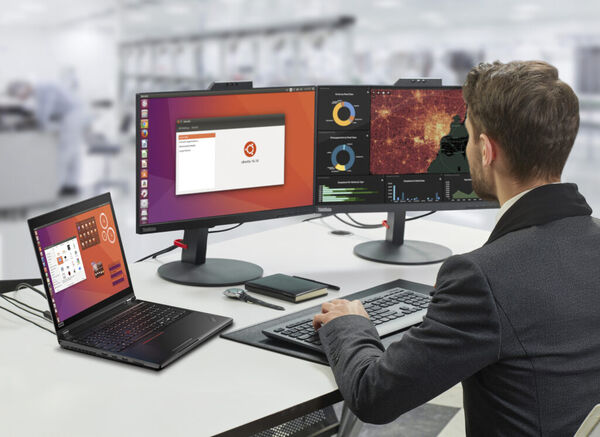
Lenovo Brings Linux Certification to ThinkPad and ThinkStation Workstation Portfolio, Easing Deployment for Developers & Data Scientists
"More than 250 million computers are sold each year and NetMarketShare reports that 2.87 percent – roughly 7.2 million users – are using those computers to run Linux®1. Once thought of as a niche IT crowd, this user base of data scientists, developers, application engineers, scientists and more is growing – stepping into sought-after roles across multiple industries and becoming essential within their companies. Now, I’m excited to share Lenovo is moving to certify the full workstation portfolio for top Linux distributions from Ubuntu® and Red Hat® – every model, every configuration. While many users prefer to customize their own machines – either on hardware without an OS or by wiping an existing client OS, then configuring and installing Linux – this can raise uncertainty with system stability, restricted performance, compatibility, end-user productivity and even IT support for devices. Now that these users are making their way out of the proverbial shadows and onto the enterprise floor, the demand is high for an out-of-the-box solution that removes the barrier for deployment of enterprise-grade hardware within a Linux software ecosystem. For the users deploying Linux on a desktop or mobile workstation, Lenovo has historically certified only certain products with a limited subset of hardware configurations." [...]
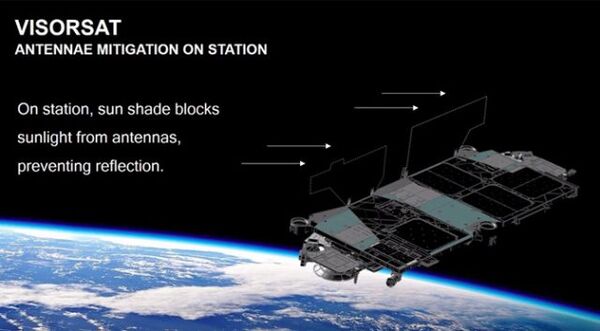
SpaceX launches 60 Starlink satellites and lands rocket in dazzling nighttime liftoff
" SpaceX successfully launched a new batch of 60 Starlink internet satellites into orbit late Wednesday (June 3) and nailed a rocket landing at sea to top off the mission. The launch is the second in five days for the California-based rocket builder. On Saturday (May 30), a different Falcon 9 rocket sent NASA astronauts Bob Behnken and Doug Hurley toward the International Space Station aboard a Crew Dragon capsule, kicking of SpaceX's landmark Demo-2 mission. The duo docked with the orbiting lab about 19 hours later and will remain there from one to four months. In stark contrast to Saturday's shiny new booster, today's mission featured a veteran member of SpaceX's rocket fleet. The extra-sooty Falcon 9 — whose first stage had already flown four times before today's mission — lifted off at 9:25 p.m. EDT (0125 GMT on June 4) from Space Launch Complex 40 at Cape Canaveral Air Force Station here in Florida, its white exterior scorched by its previous trips through the atmosphere." [...]
Ciência e Tecnologia

USB software security tool catches 26 bugs across operating systems
"EPFL researchers have developed a new tool called USBFuzz, which they have already used to detect 26 vulnerabilities in the USB driver stacks of widely used operating systems including Linux, Windows, and macOS. USB driver stacks are components that help computers communicate with external devices via the Universal Serial Bus (USB) connection. USB connections – used with devices like external hard drives, keyboards, mice, or cameras – can open up computers to attack if their operating systems contain vulnerabilities. To help detect such vulnerabilities, EPFL researchers developed a software security tool called a fuzzer, which allows them to test a computer’s ability to thwart an attack by emulating a USB device. The tool, called USBFuzz, delivers bits of random data to a target computer before autonomously observing how well the computer’s software handles the unexpected inputs. The work was carried out by Mathias Payer, head of the HexHive lab in the School of Computer and Communication Sciences (IC), and HexHive researcher Hui Peng, currently a PhD student at Purdue University." [...]

Unlocking clues to the origins of the stars
"An artificial intelligence system analysing data from the Gaia space telescope has identified more than 2,000 large protostars - and they could hold clues to the origins of the stars in the Milky Way. Protostars are young stars that are still forming. Scientists had previously catalogued only 100 of this type of forming star. The project was led by Miguel Vioque, a PhD researcher at the University of Leeds, and the findings have been published in the journal Astronomy and Astrophysics. He believes investigation of these newly identified stars has the potential to change scientists’ understanding of massive star formation and their approach to studying the galaxy. Mr Vioque and his colleagues were interested in what are known as Herbig Ae/Be stars, stars that have a mass that is at least twice that of the Sun." [...]
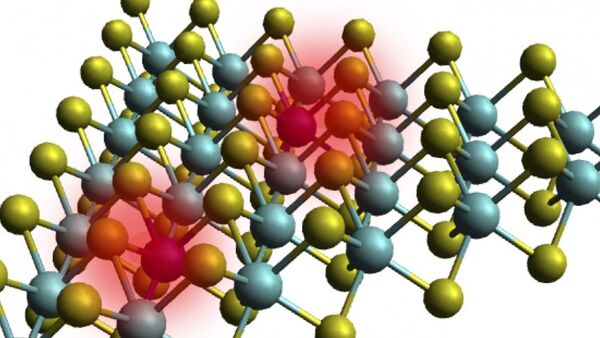
Atomically Thin Magnets for Next Generation Spin and Quantum Electronics
"Stevens researchers develop a ferromagnetic semiconductor that works at room temperature, solving one of science’s most intractable problems As our smartphones, laptops, and computers get smaller and faster, so do the transistors inside them that control the flow of electricity and store information. But traditional transistors can only shrink so much. Now, researchers at Stevens Institute of Technology have developed a new atomically thin magnetic semiconductor that will allow the development of new transistors that work in a completely different way; they not only can harness an electron’s charge but also the power of its spin, providing an alternative path to creating ever smaller and faster electronics. Rather than relying on making smaller and smaller electrical components, the new discovery, reported in the April 2020 issue of Nature Communications, potentially provides a critical platform for advancing the field of spintronics (spin + electronics), a fundamentally new way to operate electronics and a much-needed alternative to continued miniaturization of standard electronic devices. In addition to removing the miniaturization barrier, the new atomically thin magnet can also enable faster processing speed, less energy consumption and increased storage capacity. “A two-dimensional ferromagnetic semiconductor is a material in which ferromagnetism and semiconducting properties coexist in one, and since our material works at room temperature, it allows us to readily integrate it with the well-established semiconductor technology,” said EH Yang, a professor of mechanical engineering at Stevens Institute of Technology, who led this project." [...]
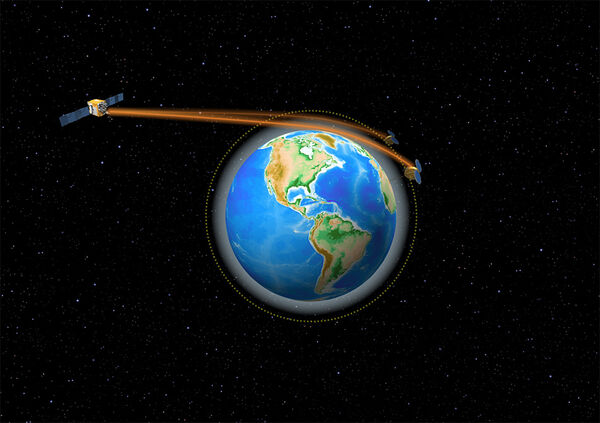
After 14 Years, First COSMIC Satellite Mission Comes To An End
"The pioneering constellation of small satellites improved weather forecasts and advanced atmospheric science using the “GPS radio occultation” technique The last of six tiny satellites that were rocketed into space 14 years ago – and then went on to prove that the wealth of accurate atmospheric data that can be gleaned from existing GPS signals can improve operational weather forecasts – was officially decommissioned on May 1, outliving its original planned lifespan by a dozen years. The first Constellation Observing System for Meteorology, Ionosphere, and Climate (COSMIC) mission, launched in 2006, used a technique known as radio occultation to derive vertical atmospheric profiles of temperature, humidity, and pressure by measuring the degree to which GPS signals bend as they travel through Earth’s atmosphere. The resulting flood of high-quality, extremely accurate data was provided to weather centers to improve forecasts and to research institutions for use in scientific studies. Throughout its lifetime, COSMIC-1 made an astounding 7 million vertical atmospheric profiles available to the operational forecast centers and research community. These data demonstrably boosted forecast accuracy and were referenced in more than 550 peer-reviewed scientific publications. In all, more than 5,000 users from over 100 countries have accessed COSMIC data." [...]
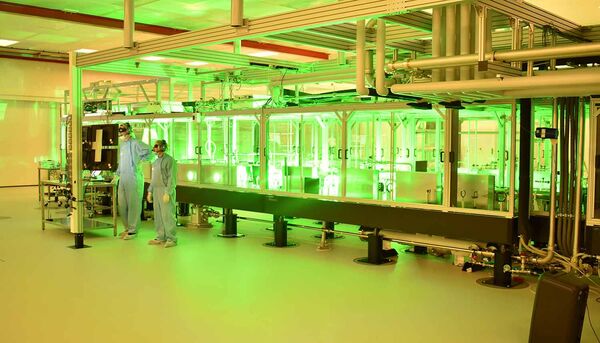
Making Matter Out of Light: High-Power Laser Simulations Point the Way
"A few minutes into the life of the universe, colliding emissions of light energy created the first particles of matter and antimatter. We are familiar with the reverse process—matter generating energy—in everything from a campfire to an atomic bomb, but it has been difficult to recreate that critical transformation of light into matter. Now, a new set of simulations by a research team led by UC San Diego’s Alexey Arefiev point the way toward making matter from light. The process starts by aiming a high-power laser at a target to generate a magnetic field as strong as that of a neutron star. This field generates gamma ray emissions that collide to produce—for the very briefest instant—pairs of matter and antimatter particles. The study published May 11 in Physical Review Applied offers a sort of recipe that experimentalists at the Extreme Light Infrastructure (ELI) high-power laser facilities in Eastern Europe could follow to produce real results in one to two years, said Arefiev, an associate professor of mechanical and aerospace engineering." [...]
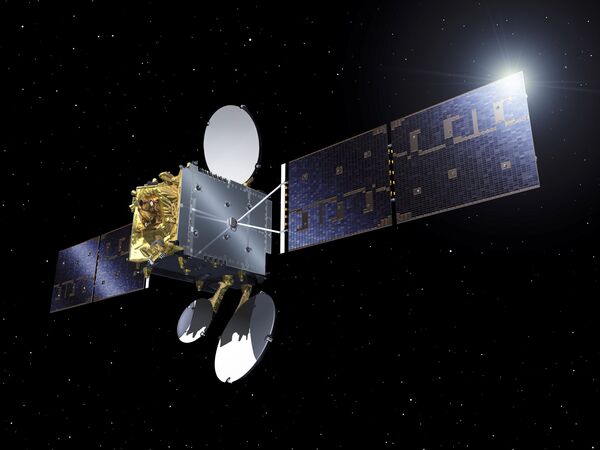
Data-relay satellite ready for service
"The second node in the most sophisticated laser communication network ever designed is ready to go into service. Dubbed the “SpaceDataHighway”, the European Data Relay System (EDRS) helps Earth-observing satellites to transmit large quantities of potentially life-saving data to Europe in near-real time. Its second satellite, EDRS-C, has now completed its in-orbit commissioning review and is ready to start service. Launched on 6 August 2019, EDRS-C has since manoeuvred into its geostationary orbit some 36 000 kilometres above Earth where it has been thoroughly tested during the past six months. This geostationary position enables the communication satellite to maintain an almost constant connection with Earth-observation satellites that are closer to the planet’s surface and circle the Earth every 90 minutes or so. The EDRS satellites use lasers to communicate with Earth-observation satellites and beam their data back to Europe in almost real time." [...]
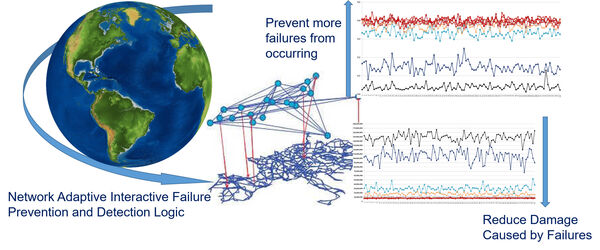
Patented technology designed to stop tiny errors from crashing large health care, supply chain systems
"The COVID-19 pandemic has forced public health, supply chain, transportation, government, economic and many other entities to interact in real time. One of the challenges in large systems interacting in this way is that even tiny errors in one system can cause devastating effects across the entire system chain. Now, Purdue University innovators have come up with a possible solution: A set of patented algorithms that predict, identify, diagnose and prevent abnormalities in large and complex systems. “It has been proven again and again that large and complex systems can and will fail and cause catastrophic impact,” said Shimon Y. Nof, a Purdue professor of industrial engineering and director of Purdue’s PRISM Center. “Our technology digests the large amount of data within and across systems and determines the sequence of resolving interconnected issues to minimize damage, prevent the maximum number of errors and conflicts from occurring, and achieve system objectives through interaction with decision makers and experts.” Nof said the Purdue technology would be helpful for smart grids, health care systems, supply chains, transportation systems and other distributed systems that deal with ubiquitous abnormalities and exceptions, and are vulnerable to cascading or large amount of failures. This technology integrates constraint modeling, network science, adaptive algorithms and state-of-the-art decision support systems." [...]

Laser-Based Technique Captures 3D Images of Impressionist-Style Brushstrokes
"Researchers have developed a new strategy that uses optical coherence tomography (OCT) to acquire both the surface and underlying details of impressionist style oil paintings. This information can be used to create detailed 3D reconstructions to enhance the viewing experience and offer a way for the visually impaired to experience paintings. “Visitors to art museums can’t closely examine paintings and see the artists’ techniques because of security and conservation concerns,” said research team leader Yi Yang from Penn State Abington. “Our new technology can create 3D reconstructions that can be rotated and magnified to view details such as brushstrokes. This would be especially useful for online classes.” Yang and colleagues from Penn State University Park and New Jersey Institute of Technology report the new technique in the Optical Society (OSA) journal Applied Optics. The research team brought together specialists in art history and conservation with electrical and optical engineers." [...]

Paper-thin gallium oxide transistor handles more than 8,000 volts
"People love their electric cars. But not so much the bulky batteries and related power systems that take up precious cargo space. Help could be on the way from a gallium oxide-based transistor under development at UB. In a study published in the June edition of IEEE Electron Device Letters, electrical engineers describe how the tiny electronic switch can handle more than 8,000 volts, an impressive feat considering it’s about as thin as a sheet of paper. The transistor could lead to smaller and more efficient electronic systems that control and convert electric power — a field of study known as power electronics — in electric cars, locomotives and airplanes. In turn, this could help improve how far these vehicles can travel." [...]
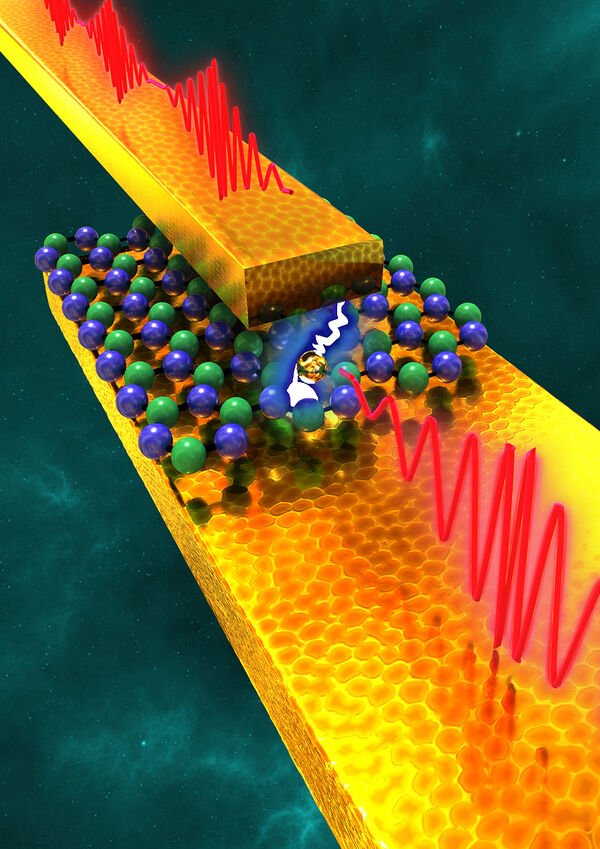
New 5G Switches Mean Battery Life Improvements, Higher Bandwidth and Speeds
"The 5G revolution has begun, and the first lines of phones that can access the next generation of wireless speeds have already hit the shelves. Researchers at The University of Texas at Austin and the University of Lille in France have built a new component that will more efficiently allow access to the highest 5G frequencies in a way that increases devices’ battery life and speeds up how quickly we can do things like stream high-definition media. Smartphones are loaded with switches that perform a number of duties. One major task is jumping between networks and spectrum frequencies: 4G, Wi-Fi, LTE, Bluetooth, etc. The current radio-frequency (RF) switches that perform this task are always running, consuming precious processing power and battery life. “The switch we have developed is more than 50 times more energy efficient compared to what is used today,” said Deji Akinwande, a professor in the Cockrell School of Engineering’s Department of Electrical and Computer Engineering who led the research." [...]

Scientists Shed Light on Growth of Black Holes
"Scientists at the Center for Astrophysics | Harvard & Smithsonian, and the Black Hole Initiative (BHI), have shed light on how black holes grow over time by developing a new model to predict if growth by accretion or by mergers is dominant, according to the results of a study presented today at the virtual 236th meeting of the American Astronomical Society and published simultaneously in The Astrophysical Journal. Dr. Avi Loeb, Frank B. Baird Jr. Professor of Science at Harvard, and Dr. Fabio Pacucci, astrophysicist and BHI & Clay Fellow at CfA, have developed a theoretical model to determine the main channel for the growth of black holes. The model is valid from the local universe up to redshift 10, or roughly from the present day to about 13 billion years ago. The study suggests that the main growth channel depends on the mass of the black hole and on redshift. In the nearby universe small black holes grow mostly by accretion, while very big black holes grow mostly via mergers." [...]
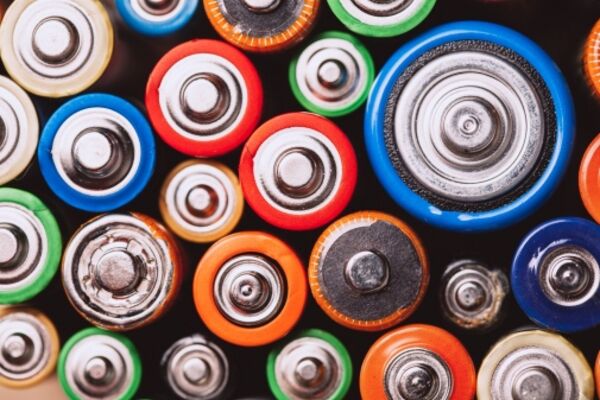
New NiMH batteries perform better when made from recycled old NiMH batteries
"A new method for recycling old batteries can provide better performing and cheaper rechargeable hydride batteries (NiMH) as shown in a new study by researchers at Stockholm University. “The new method allows the upcycled material to be used directly in new battery production,” says Dag Noréus, professor at the Department of Materials and Environmental Chemistry at Stockholm University who, together with other researchers, has conducted the study published in the scientific journal Molecules. The new recycling consists of mechanical washing and separation of reusable electrode material and corrosion products from old, used electrodes. “More than 95 percent is useful and several steps can be saved in the manufacture of new batteries that also get better performance. Recycling will be easier as it avoids costly remelting and reduction included in the conventional battery recycling.” Hydride batteries, so-called NiMH batteries, are based on a nickel electrode and a hydrogen electrode, where the hydrogen is stored in a metal hydride. The battery is one of the four basic types of rechargeable batteries available on the market today." [...]
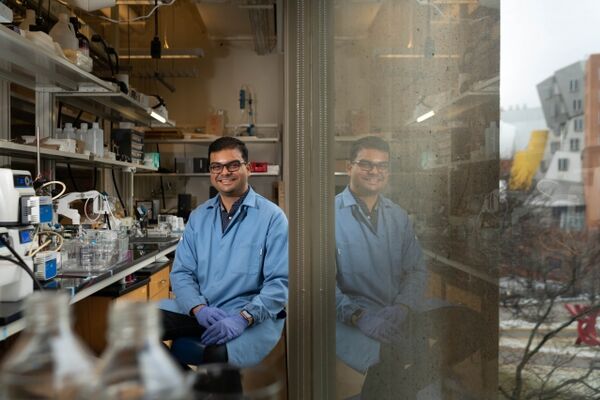
Lighting the way to better battery technology
"Doctoral candidate Supratim Das wants the world to know how to make longer-lasting batteries that charge mobile phones and electric cars. Supratim Das’s quest for the perfect battery began in the dark. Growing up in Kolkata, India, Das saw that a ready supply of electric power was a luxury his family didn’t have. “I wanted to do something about it,” Das says. Now a fourth-year PhD candidate in MIT chemical engineering who's months away from defending his thesis, he’s been investigating what causes the batteries that power the world’s mobile phones and electric cars to deteriorate over time. Lithium-ion batteries, so-named for the movement of lithium ions that make them work, power most rechargeable devices today." [...]
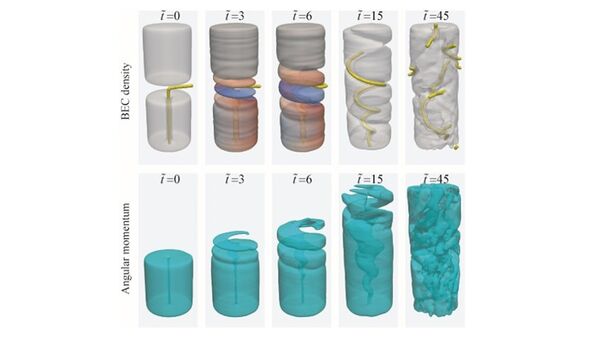
Theoretical breakthrough shows quantum fluids rotate by corkscrew mechanism
"If a drop of creamer falls from a spoon into a swirling cup of coffee, the whirlpool drags the drop into rotation. But what would happen if the coffee had no friction — no way to pull the drop into a synchronized spin? Superfluids — also called quantum fluids — appear in a wide range of systems and applications. For example, cosmological superfluids meld with each other during neutron star mergers, and scientists use superfluid helium to cool magnetic resonance imaging (MRI) machines. The fluids have unique and useful properties governed by quantum mechanics — a framework usually used to describe the realm of the very small. For superfluids, however, these quantum mechanical properties dominate on a larger, macroscopic scale." [...]
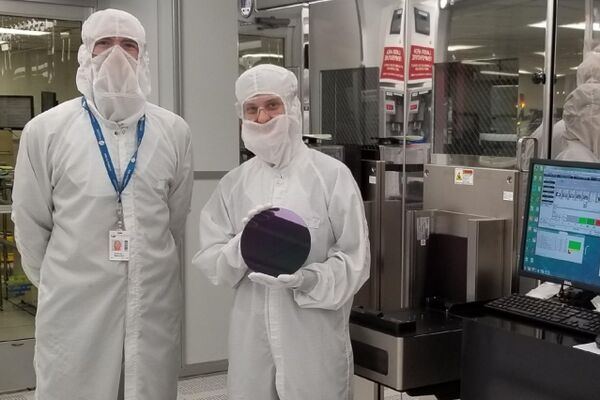
Carbon nanotube transistors make the leap from lab to factory floor
"Technique paves the way for more energy efficient, 3D microprocessors. Carbon nanotube transistors are a step closer to commercial reality, now that MIT researchers have demonstrated that the devices can be made swiftly in commercial facilities, with the same equipment used to manufacture the silicon-based transistors that are the backbone of today’s computing industry. Carbon nanotube field-effect transistors or CNFETs are more energy-efficient than silicon field-effect transistors and could be used to build new types of three-dimensional microprocessors. But until now, they’ve existed mostly in an “artisanal” space, crafted in small quantities in academic laboratories. In a study published June 1 in Nature Electronics, however, scientists show how CNFETs can be fabricated in large quantities on 200-millimeter wafers that are the industry standard in computer chip design. The CNFETs were created in a commercial silicon manufacturing facility and a semiconductor foundry in the United States." [...]
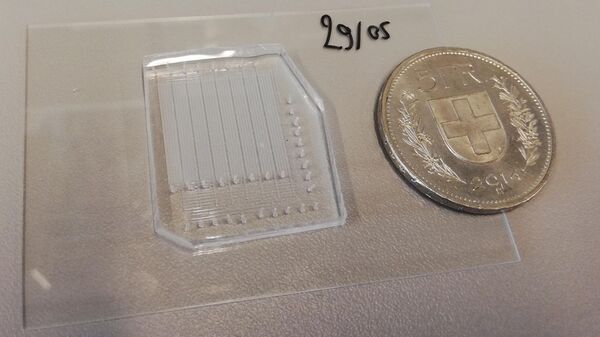
FloChiP, a new tool optimizing gene-regulation studies
"EPFL scientists have developed FloChip, a new microfluidic take on the widely used chromatin immunoprecipitation (ChIP) technique. By automating and cutting the cost of ChIP and sequential-ChIP, FloChIP has the potential to become a widely used tool for the study of chromatin biology and gene regulation. In the cell, proteins often interact directly with DNA to regulate and influence the expression of genes. For this to happen, proteins need to travel into the cell’s nucleus where the DNA is tightly twisted and packed as chromatin, which forms the well-known chromosomes. When the protein reaches its target location, chromatin unwinds to reveal the section of DNA that the protein will interact with. This interaction is obviously of great interest to biologists as it lies at the heart of multiple important cell functions or even malfunctions that lead to disease." [...]

Researchers eye manganese as key to safer, cheaper lithium-ion batteries
"One of Earth’s most abundant metals, manganese could help replace expensive cobalt in battery cathodes. Most of the lithium-ion batteries that power electric cars today depend, to some degree, on cobalt. This blue-gray metal helps pack more power into a battery safely, but it also poses a problem: Cobalt is expensive and often mined in unstable regions. As the market for energy storage grows, the search is on for battery chemistries that rely on cobalt far less, or not at all. Researchers at the U.S. Department of Energy (DOE)‘s Argonne National Laboratory are developing a technology that centers on manganese, one of Earth’s most abundant metals. The work, which is funded by DOE’s Vehicle Technologies Office, could apply not only to electric vehicles but the electric grid, where battery storage is needed for variable energy resources like wind and solar, and other industries." [...]
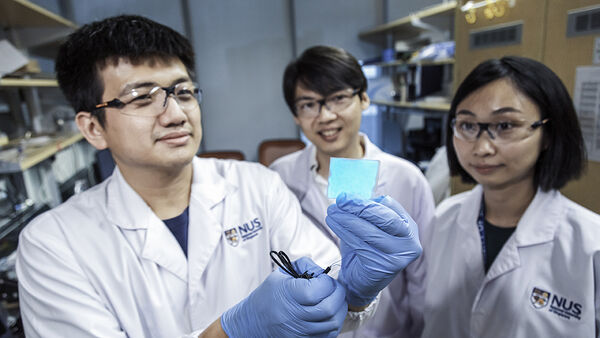
New electronic material for wearables and soft robots
"Imagine a flexible digital screen that heals itself when it cracks, or a light-emitting robot that locates survivors in dark, dangerous environments or carries out farming and space exploration tasks. A novel material developed by a team of NUS researchers could turn these ideas into reality. The new stretchable material, when used in light-emitting capacitor devices, enables highly visible illumination at much lower operating voltages, and is also resilient to damage due to its self-healing properties. This innovation, called the HELIOS (which stands for Healable, Low-field Illuminating Optoelectronic Stretchable) device, was achieved by Assistant Professor Benjamin Tee and his team from the NUS Institute for Health Innovation & Technology and NUS Materials Science and Engineering. The results of the research were first reported in prestigious scientific journal Nature Materials on 16 December 2019. Durable, low-power material for next-gen electronic wearables and soft robots “Conventional stretchable optoelectronic materials require high voltage and high frequencies to achieve visible brightness, which limits portability and operating lifetimes." [...]
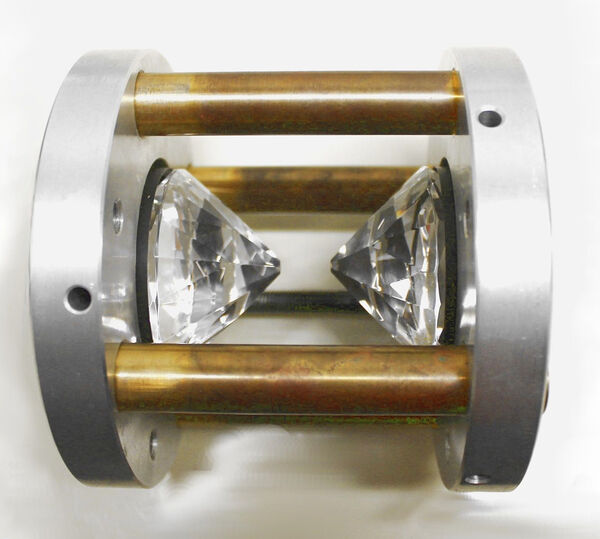
"Black nitrogen": Bayreuth researchers discover new high-pressure material and solve a puzzle of the periodic table
"In the periodic table of elements there is one golden rule for carbon, oxygen, and other light elements. Under high pressures they have similar structures to heavier elements in the same group of elements. Only nitrogen always seemed unwilling to toe the line – that is, until now. Recently, high-pressure researchers of the University of Bayreuth have actually disproved this special status. Out of nitrogen, they have created a crystalline structure which under normal conditions occurs in black phosphorus and arsenic. The structure contains two-dimensional atomic layers, and is therefore of great interest for high-tech electronics." [...]
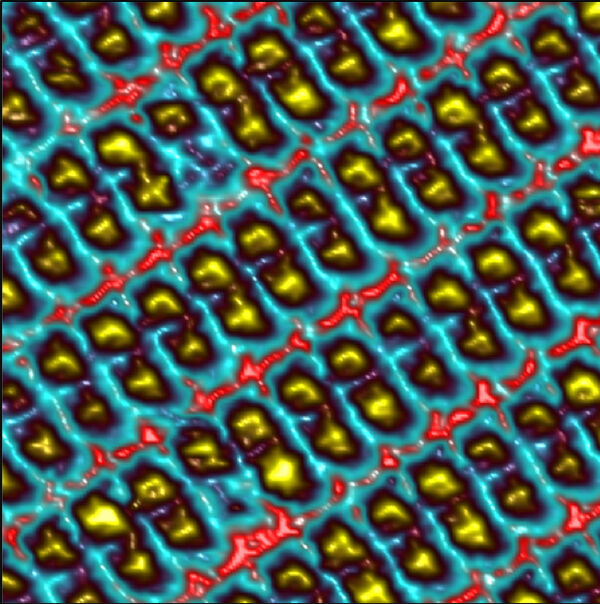
Smart molecules could be key to computers with 100-times bigger memories
"Computer hard drives of the future could be made up of smart molecules. Researchers have discovered a single molecule ‘switch’ that can act like a transistor and offers the potential to store binary information – such as the 1s and 0s used in classical computing. The molecule is around five square nanometres in size. This means that more than one billion of them would fit onto the cross-section of a human hair. The international team of scientists behind the breakthrough believe that molecules like the ones they have discovered could offer information density of around 250 terabits per square inch – which is around 100 times the storage density of current hard drives. Although the researchers do not expect that the particular molecules they discovered will be used in real hard drives, the study is an important proof of concept that brings us closer to the brave new world of true molecular electronics." [...]
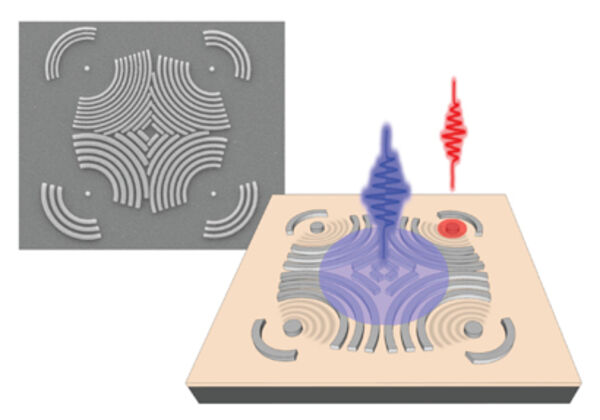
New optical technique provides more efficient probe of nanomagnet dynamics
"Data storage devices and other emerging technologies use magnetic elements smaller than 100 nanometers, but studying their magnetization dynamics can be a challenge The performance of magnetic storage and memory devices depends on the magnetization dynamics of nanometer-scale magnetic elements called nanomagnets. Researchers at UC Santa Cruz have developed a new optical technique that enables efficient analysis of single nanomagnets as small as 75 nanometers in diameter, enabling them to extract critical information for optimizing device performance. “It’s a much more efficient method to get critical device parameters for magnetic memory and other applications,” said electrical engineer Holger Schmidt, the Kapany Professor of Optoelectronics at UC Santa Cruz. Schmidt and first author Wei-Gang Yang, a postdoctoral researcher in his lab, reported their results in a paper published in Applied Physics Letters as the cover article of the May 26 issue. The traditional optical technique Schmidt’s lab has employed to study these materials uses a short laser pulse to knock the nanomagnet out of its equilibrium state, which allows researchers to extract information about the magnet’s properties as it returns to its normal state. With smaller nanomagnets, however, this approach becomes very inefficient as the optical signal is reduced and more difficult to pick up." [...]
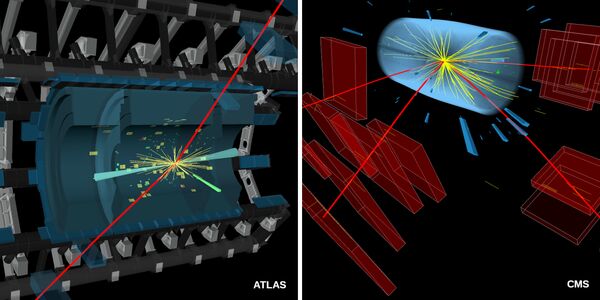
Exploring new ways to see the Higgs boson
"The ATLAS and CMS collaborations presented their latest results on new signatures for detecting the Higgs boson at CERN’s Large Hadron Collider The ATLAS and CMS collaborations presented their latest results on new signatures for detecting the Higgs boson at CERN’s Large Hadron Collider. These include searches for rare transformations of the Higgs boson into a Z boson – which is a carrier of one of the fundamental forces of nature – and a second particle. Observing and studying transformations that are predicted to be rare helps advance our understanding of particle physics and could also point the way to new physics if observations differ from the predictions. The results also included searches for signs of Higgs transformations into “invisible” particles, which could shine light on potential dark-matter particles. The analyses involved nearly 140 inverse femtobarns of data, or around 10 million billion proton–proton collisions, recorded between 2015 and 2018. The ATLAS and CMS detectors can never see a Higgs boson directly: an ephemeral particle, it transforms (or “decays”) into lighter particles almost immediately after being produced in proton–proton collisions, and the lighter particles leave telltale signatures in the detectors." [...]
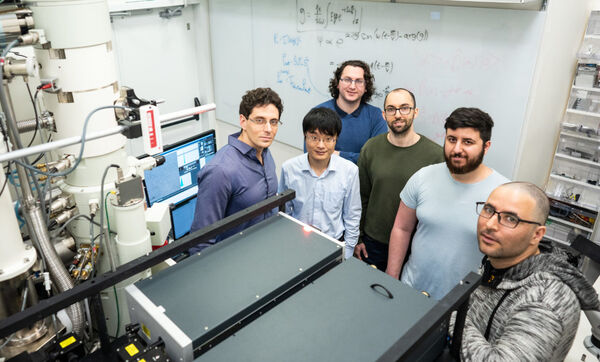
One-of-a-kind Microscope Enables Breakthrough in Quantum Science
"Technion Professor Ido Kaminer and team have made a dramatic breakthrough in the field of quantum science: a quantum microscope that records the flow of light, enabling the direct observation of light trapped inside a photonic crystal. Their research, “Coherent Interaction Between Free Electrons and a Photonic Cavity,” was published in Nature. All the experiments were performed using a unique ultrafast transmission electron microscope at the Technion-Israel Institute of Technology. The microscope is the latest and most versatile of a handful that exist in the scientific world. “We have developed an electron microscope that produces, what is in many respects, the best near- field optical microscopy in the world. Using our microscope, we can change the color and angle of light that illuminates any sample of nano materials and map their interactions with electrons, as we demonstrated with photonic crystals,” explained Prof. Kaminer." [...]
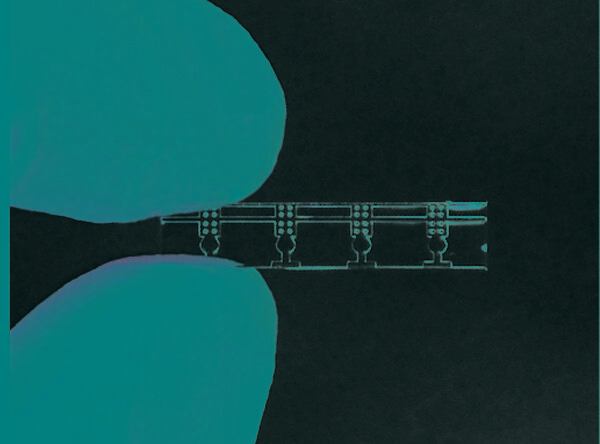
Small see-through container improves plant micrografting
"A transparent container made by Nagoya University researchers allows easy and quick grafting of very young plants, with benefits for agriculture and plant research. A type of plant grafting needing a tremendous amount of precision and skill has now been made faster and easier thanks to a simple transparent container. Researchers at Nagoya University have developed a micrografting device that guides seedling growth and facilitates the grafting of the embryonic shoots of one plant onto the tiny stalks of another. The new device shows potential for facilitating research into plant signalling. The details were published in The Plant Journal. The concept can be expanded to crop grafting to develop more resilient crop varieties." [...]
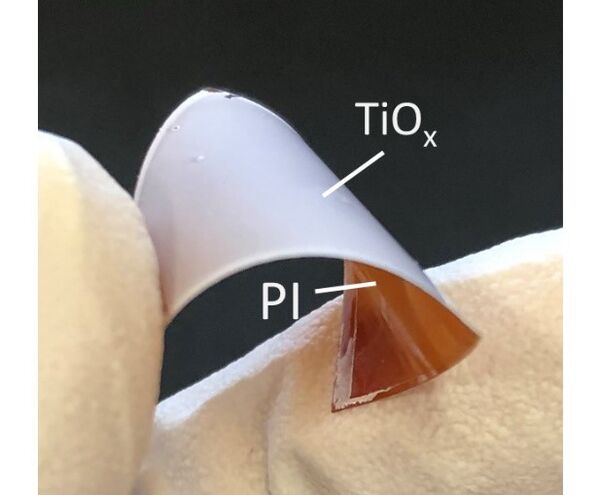
Lighting the way to porous electronics and sensors
"Many common household items and devices have a coating that improves performance. For example, the thin Teflon coating on cookware helps prevent food from sticking to the surface. However, it's difficult to prepare—at room temperature—the strongly adhering, high-performance ceramic coatings that are commonly used in many applications, such as electronics. Now, researchers from Japan have solved this problem. In a study published in ACS Applied Electronic Materials, researchers from Osaka University have shown how to coat glass and plastic—and presumably many other surfaces—with a thin, porous ceramic. The fabrication process is straightforward, the materials are cheap, and the ceramic's gas sensing performance is considerably improved compared with current devices." [...]
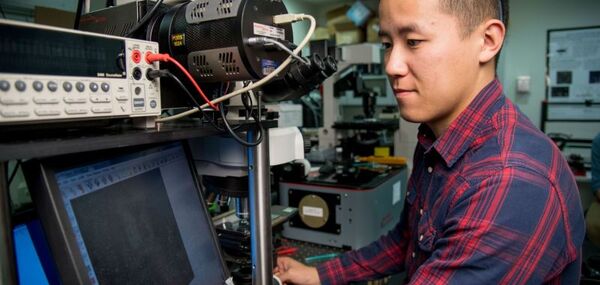
Solar cells, phone displays & lighting could be transformed by nanocrystal assembly method
"Smart phones, tablets and laptop displays, camera lenses, biosensing devices, integrated chips and solar photovoltaic cells are among the applications that could stand to benefit from an innovative method of nanocrystal assembly pioneered by Australian scientists, led by the ARC Centre of Excellence in Exciton Science (Exciton Science). Nanocrystals have a wide range of existing and potential uses, but they are often made with wet chemical methods that present challenges when seeking to incorporate them effectively into devices. However, researchers from Exciton Science have demonstrated a highly efficient and controllable method to assemble single nanoparticles directly into a pre-patterned template. They have shared the details of this technique in an article published in the journal Advanced Materials that reviews the state of the field and summarises their novel approach. By applying an electric field at a certain level of strength, a technique called electrophoretic deposition (EPD), researchers at the University of Melbourne and Australia’s national science agency, CSIRO, were able to create a nearly perfect single nanocrystal array using either gold nanospheres or gold nanorods. And by tweaking the potential applied to the materials as part of this field, the researchers even discovered they were able to dictate whether the nanocrystals assemble in vertical or horizontal configurations." [...]
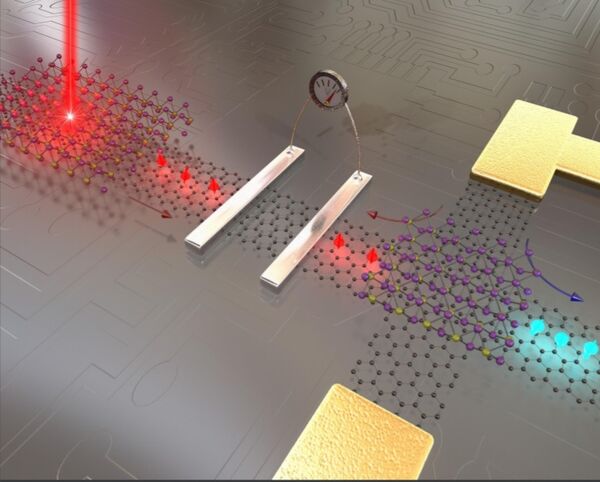
Graphene and 2D materials could move electronics beyond ‘Moore’s Law’
"A team of researchers based in Manchester, the Netherlands, Singapore, Spain, Switzerland and the USA has published a new review on a field of computer device development known as spintronics, which could use graphene as a building block for next-generation electronics. Recent theoretical and experimental advances and phenomena in studies of electronic spin transport in graphene and related two-dimensional (2D) materials have emerged as a fascinating area of research and development. Spintronics is the combination of electronics and magnetism at nanoscale and could allow electronic development at speeds exceeding Moore’s law, which observes that computer processing power roughly doubles every two years, while the price halves. Spintronic devices may offer higher energy efficiency and lower dissipation as compared to conventional electronics, which rely on charge currents. In principle, we could have phones and tablets operating with spin-based transistors and memories, greatly improving speed and storage capacity. Since its isolation in 2004, graphene has opened the door for other 2D materials." [...]
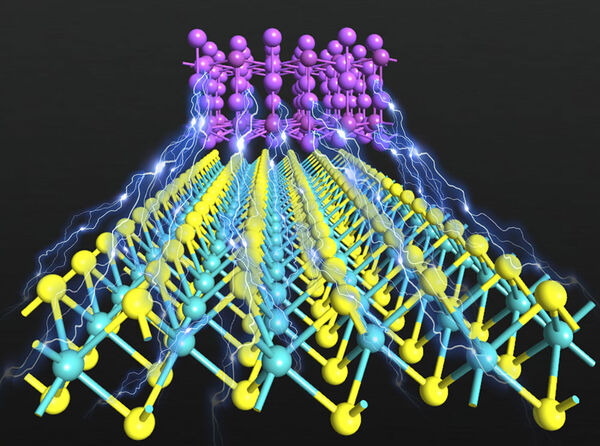
Boosting Energy Efficiency of 2D Material Electronics using Topological Semimetal
"SUTD researchers discover a new way to boost the energy efficiency of 2D semiconductor electronics by synergizing 2D materials and topological semimetals. Driven by the ever-increasing desires of the consumer market for smaller, lighter and smarter devices, the size of consumer electronics such as smartphones, tablets and laptops, have been continually shrinking while becoming more powerful in terms of performance over the years. Making these devices smaller, however, comes at a price. Due to the dominance of bizarre quantum effects in ultracompact semiconductor chips, field-effect transistors (FET) – electrical switches that form the backbones of computer processors and memory chips – stop behaving in a controllable way. Sophisticated device architectures, such as FinFET and Gate-All-Around FET, must be employed in order to continue scaling down the size of electronic devices. Two-dimensional (2D) semiconductors have been hailed as a new option for next-generation ultracompact computing electronics." [...]
Projetos Maker
Diversos Projetos interessantes.
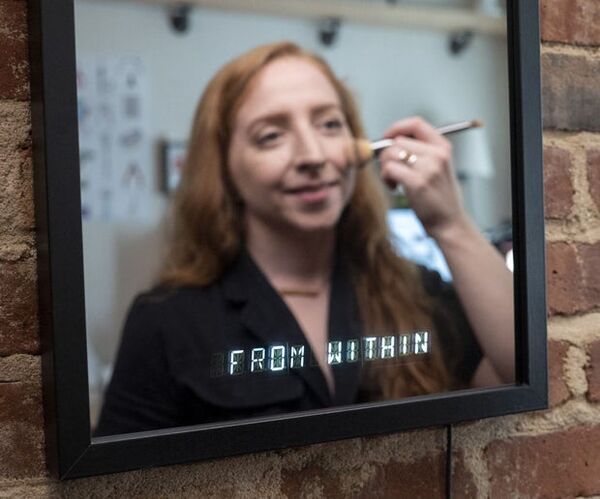
Electronic Affirmation Mirror
"When you look in the mirror, who couldn’t use a few words of encouragement? Build a display inside a mirror to scroll custom affirmations you can read over your own reflection. This polished project comes together easily with a store-bought shadowbox frame and some see-through mirror material. You can build a simple version with a basic Arduino or compatible, or level it up using a NodeMCU (ESP8266 wifi board) in order to add more positive quotes to the mirror over the internet. This article was originally published in HackSpace Magazine. Supplies: Shadowbox frame See-through mirror glass or acrylic Black paper tape Pen or pencil Ruler or tape measure Craft knife USB cable NodeMCU, Trinket M0 or similar microcontroller board White alphanumeric LED displays with i2c backpacks (I used three but two is also fine) Soldering tools and supplies Large solderable breadboard" [...]
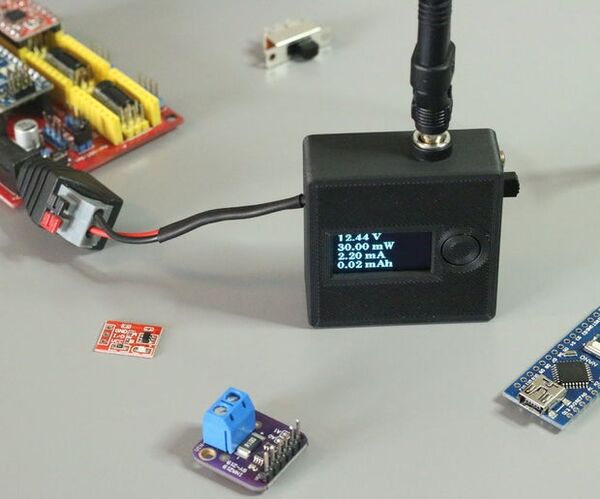
Tiny V/A Meter With INA219
"Tired of replugging your multimeter when you want to measure both voltage and current on a small project? Tiny V/A meter is the device you need! There is nothing new about the INA219 high side current sensor. There are plenty of good projects out there that utilizes its ability to measure both current and voltage on a load. I originally got inspired by youtuber Julian Ilett and his "10 Minute Arduino Project - INA219 Current Sensor" video. But I wanted a compact meter with a simpel interface and a 3D printed case - so I decided to make that myself." [...]
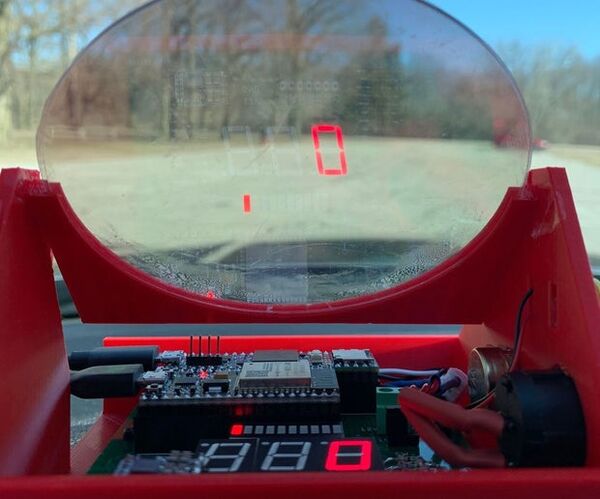
Car Heads Up Display (Arduino + ELM327)
"Some years ago I had the chance to drive a C6 Corvette with a HUD and loved it. The ability to see your speed and RPM without taking your eyes off the road made driving much more enjoyable. For a long, long time I've wanted to make a HUD for my own car. While doing some research about OBD2 and Arduino car hacking, I decided to make one from scratch and this instructable shows how you can make one, too! Supplies: Teensy 3.5 (or 3.6) ESP32 ELM327 Bluetooth Scanner SSD1331 OLED Display OBD2 Extension Cable SD Card 7 Segment LED Display (2x) 10 Segment LED Bar Screw Terminal 3D Models ABS Filament Wire 3D Printer Soldering Kit 75 Ohm Resistor (35x) Heatshrink 7 Pin JST XH 2.54mm Connector (M/F pair) Standoffs Custom PCB Potentiometer Power Switch Plexiglass Disc Reflective Windshield Film Scissors Sharpie" [...]
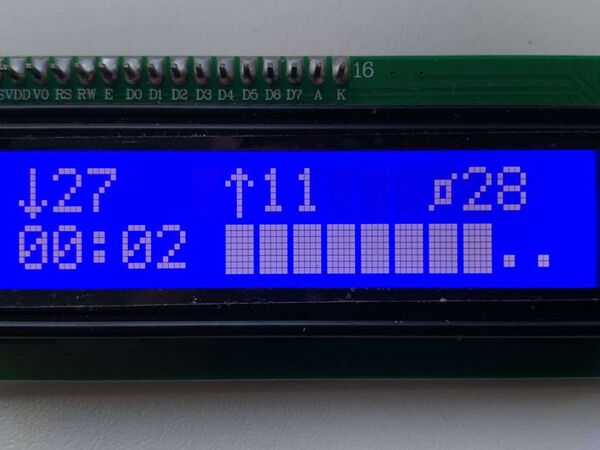
Network speedtest with display
"A 16x2 lcd displaying the bandwith of up- and download on a 16x2 lcd screen. Configurable and easy to build. I was thinking about monitoring the companies network traffic with a small monitor, and finally came up with this simple solution. The pi runs a python script, which checks the network bandwith every 60s (which can be changed with command line arguments) and writes the result into a lcd display. As this project gets updated from while to while, I will not post the full code here but instead on Github. " [...]
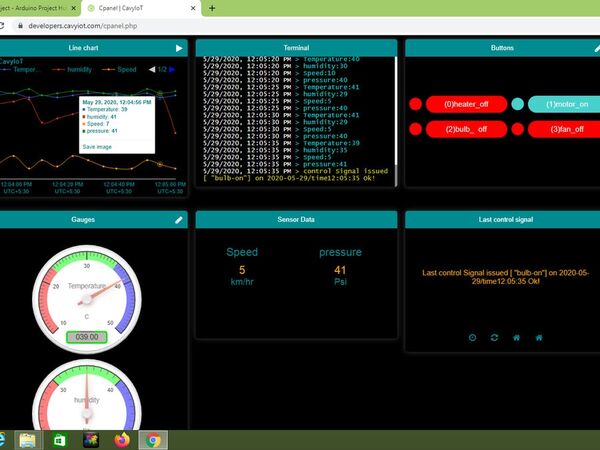
IOT automation dashboard
"Data visualization, Live charts, gauges, and Triggers using Arduino This project is for all Arduino lovers who are interested developing IoT project with maximum utility on their dashboard. project Features - Monitors live data stream in charts - Control device from anywhere anytime. - User can set the triggers for automation. - Log file for the track of operations, data and live status of device in the local storage of development boards. User only need to upload few lines of code ! " [...]
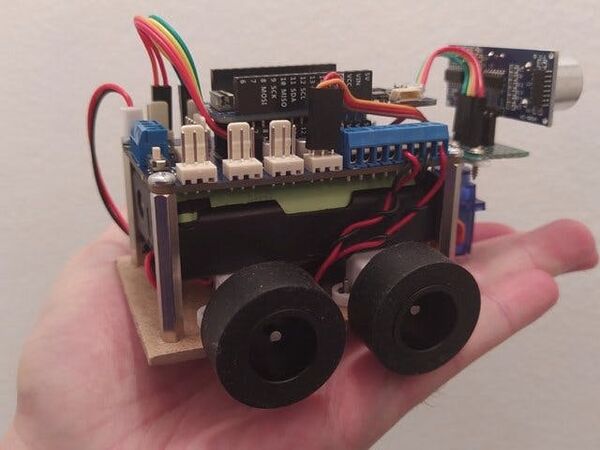
Mini 4WD Arduino Robot Controlled by Bluetooth
"Mini 4WD Arduino robot controlled by Bluetooth. The idea of this project was to make a robot whose size will not occupy much more than the size of the Arduino MKR Motor Carrier board, would it succeed? The robot is made up of an Arduino MKR WiFi 1010 board coupled to the Arduino MKR Motor Carrier board and four N20 motors of 100 rpm. A servomotor that moves an HC-SR04 ultrasound sensor to detect obstacles has also been added. We are going to control the robot in two ways: Using an accelerometer (Arduino Nano 33 BLE Sense). Through an Android application created with MIT App Inventor." [...]
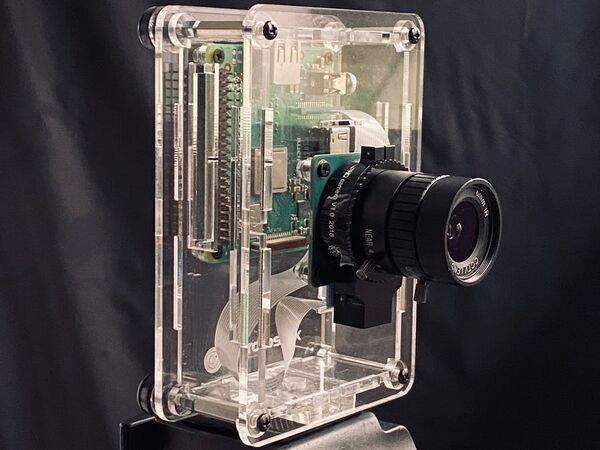
Raspberry Pi High Quality Camera Headless Setup Tips
"Learn how to setup and use the new Raspberry Pi High Quality Camera in a headless setup. Story In this project, I'm going to show you how you can have a headless setup of your Pi with a Camera, in particular the new High Quality Camera with its interchangeable lens with adjustable Focus and Aperture and improved picture quality! Introduction After getting my hands on the new Raspberry Pi High Quality Camera (along with a "wide angle" 6mm CS mount lens), I thought I could jump right in with the photography and playing around with it. I must admit I hadn't really tried out the Pi Camera before, even though I had an older generation one sitting around. That's when I realized two things: 1. It is not that straightforward to operate the Pi camera remotely, especially when trying to compose a shot." [...]
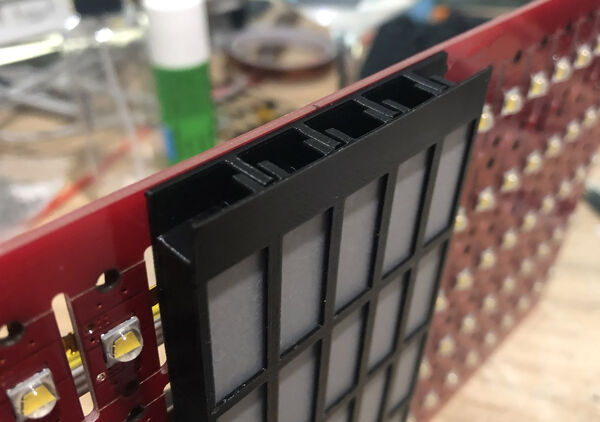
Building an LED Matrix Driver
"I’m lucky to have friends working in the electronics industry in various different capacities. Through them, I’ll occasionally get hold of some unwanted/rejected/surplus boards or components that would otherwise just end up in the WEEE bin. It’s always nice when one of these lands on my desk that I think “hey! I could do something with this!”. Recycling! The Boards This time, it’s some LED boards." [...]
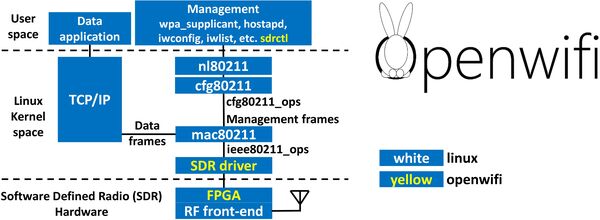
openwifi
"openwifi: Linux mac80211 compatible full-stack IEEE802.11/Wi-Fi design based on SDR (Software Defined Radio). This repository includes Linux driver and software. openwifi-hw repository has the FPGA design. [Project document] [Demo video and video download] [openwifi maillist] [Cite openwifi project] Openwifi code has dual licenses. AGPLv3 is the opensource license. For non-opensource license, please contact [email protected]." [...]
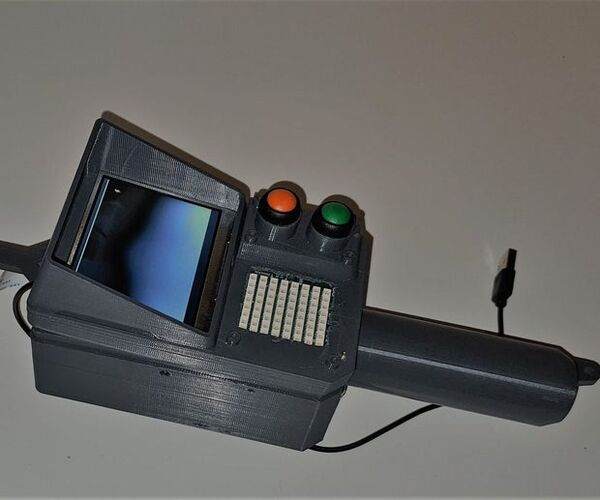
Ghostbusters PKE Meter
"There was one cartoon in particular that seems to dominate my childhood memories and that was The Real Ghostbusters. Ray, Winston, Peter and Egon were armed to the teeth with really cool gadgets, among them the PKE meter. This was my favourite of all their tech and it basically detected the ghosts they were trying to hunt. What I am going to do is make my own fully functional PKE meter. Supplies: 3D printer (although there are plenty of services which will print and post) 3D model files found here. Raspberry Pi 3B+ Night vision camera Sense Hat 3.5” Monitor (I’ve found a cheap alternative to official Pi screens which need a bit of modding but works great) Wires Screws/bolts Battery pack found here." [...]
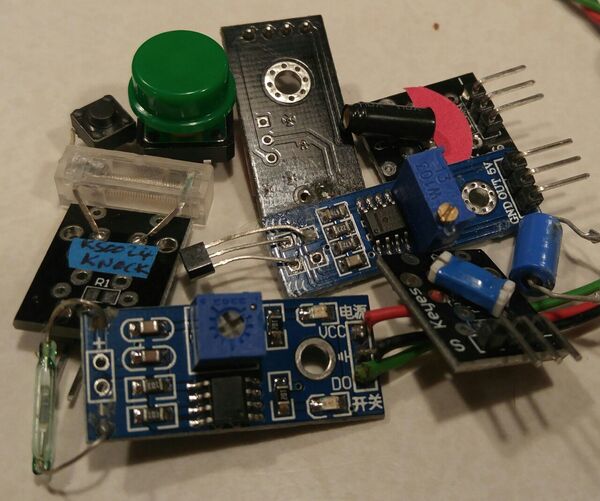
Digital IO library
"This goal of this Digital I/O library is to ease the use of simple sensors and devices attached to Digital I/O pins. If you like this library please star or comment on github to pat me in the back and let others know it exists Benefits It can debounce noisy signals to avoid program glitches It has level and spike detection to support things like button presses or transient knock sensor signals. It is nimble and compact. Classes use the minimum amount of RAM to hold data (usually 1 byte), and classes rely on constant folding to optimize codewithout sacrificing functionality. Methods often take less program memory than equivalent native Arduino code. AVR specific version of the classes access AVR ports directly to generate faster code that is often 15% smaller." [...]
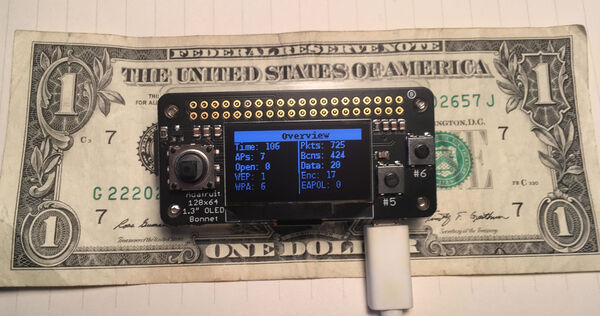
Pi Sniffer
"Pi Sniffer is a Wi-Fi sniffer built on the Raspberry Pi Zero W. While there are many excellent sniffing platforms out there, Pi Sniffer is unique for its small size, real-time display of captured data, and handling of user input. Current Release Image You can download an RPI image of this project from the "Releases" page. If you don't trust that, you can generate your own release by using the image_gen/create_image.sh script. Project Goals The goal of this project was to create a Wi-Fi sniffer that I could carry around in my pocket, easily view real-time status, decrypt packets on the fly, and change antenna channels as needed. Also, I wanted this project to be cheap (less than $100) and require no soldering. Hardware The project was conceived with the goal to avoid any type of soldering." [...]
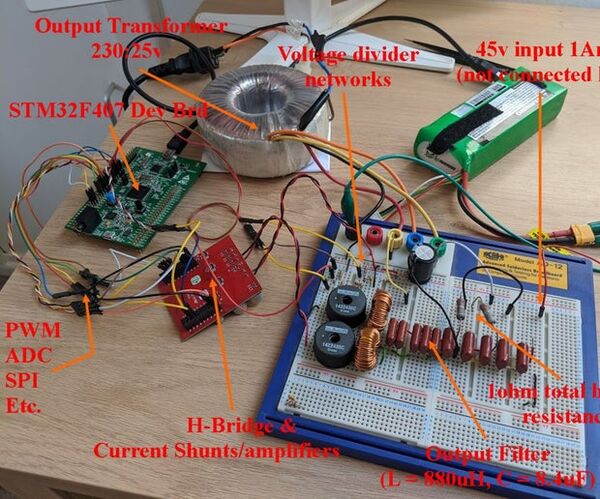
Grid Tie Inverter
"This is a meaty project so buckle up! Grid tie inverters enable you to push power into a mains socket which is an awesome ability. I find the power electronics and control systems involved in their design interesting so I built my own. This report shares what I learnt and documents how I did things. I’d be interested in any comments you had (apart from the ones about not messing with mains electricity). All the concepts are scalable but this setup had a maximum output of 40 watts before the filter inductors began saturating." [...]

Telebot
"Enjoy some face to face time with your friends - even during the quarantine - with TELEBOT, the friendly telepresence robot. Introducing TELEBOT, a (partially) 3D printed telepresence robot we made out of junk we found in my closet. Simply inject your friends' consciousnesses into the robot using a standard 3.5mm audio cable, then enjoy some quality time - face to face! After possessing the robot, your friends can choose from one of three customization options (wizard hat, cowboy hat, or top hat) to really give it that "personal touch". And, as an added bonus, TELEBOT glows in the dark. Now, with TELEBOT, your friends can keep you company... even at night!" [...]
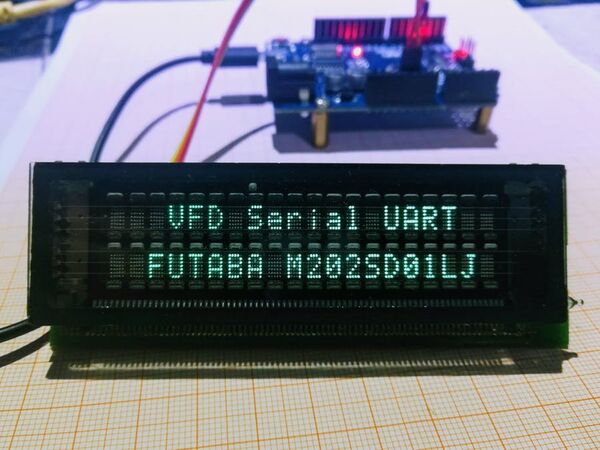
VFD Serial Futaba M202SD01 Arduino
"Using an old VFD serial communication display for use with Arduino based microcontrollers. Story I remember back in 2018 that I got this screen (from an old guitar pedalboard) and didn't know how to make it work. I was just starting out in the Arduino world, and only knew how to operate a 16X02 display with the standard Arduino library. With this display there were no libraries, and I only had the datasheet. With this I documented and it was that I understood in real life how UART communication works. Fortunately, it didn't take me long to discover the Arduino SoftwareSerial library." [...]
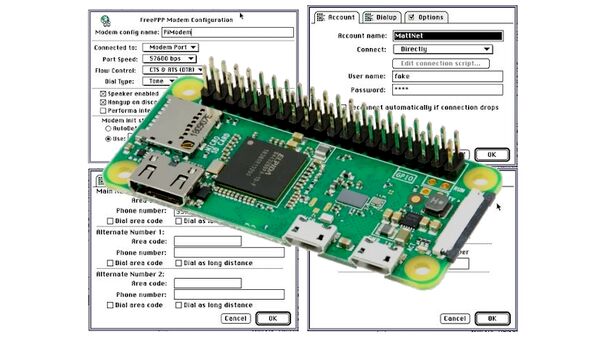
The PiModem Project
"There has been a resurgence recently in BBSing. While the days of phone lines are long gone, more and more BBS's are popping up - some new, some returning from dusty backup media. Without phones and modems, these "modern" BBS's are reachable over the Internet via a telnet connection. Obviously, the best way to connect to a BBS is through an (at least loosely) era-appropriate system and a serial communications program. There are several purpose-built devices out there that emulate a modem command set for just this purpose - the WiModem232 from cbmstuff.com being one of the more recent additions. If you are looking for an out of the box option for some retro BBSing, you can't go wrong with this device." [...]

TinyUPS - Uninterruptible Power Supply based on ATtiny13A
"TinyUPS is a simple 5V/2.5A uninterruptible power supply with a li-ion battery as a buffer, a load sharing power path management system and an ATtiny13 for monitoring power supply and battery charge level as well as for communication with the connected device. If external power is connected to the tinyUPS the input voltage or vcc of the ATtiny13 is delivered by this source, otherwise by the battery. The ATtiny13 monitors the input voltage and tells the connected device to shutdown by pulling the SHUTDOWN-line low when the input voltage falls below a certain threshold (SHUTDOWNLEVEL). This happens when the external power source is diconnected or disabled and the battery level falls below this threshold. After waiting a certain time (SHUTDOWNTIMER) to allow the connected device to safely shut down, the ATtiny13 deactivates the boost converter and turns off the power to the connected device. If the input voltage rises again above a certain threshold (POWERONLEVEL) it activates the boost converter and turns on the power to the connected device." [...]
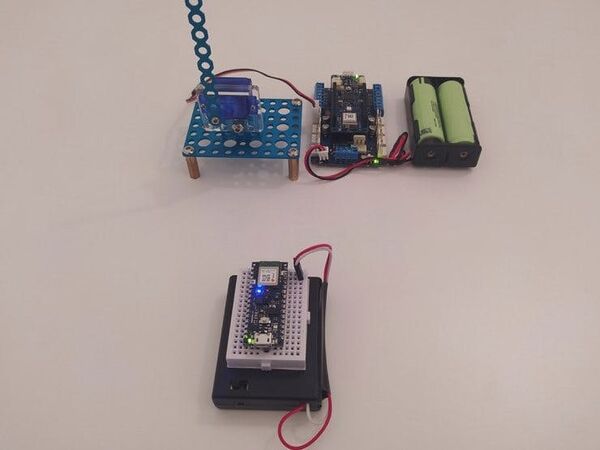
Bluetooth Low Energy: Subscription to a Service
"An example of how to subscribe to a characteristic of a service. In this tutorial we are going to see an example of using Bluetooth Low Energy technology using the Arduino MKR WiFi 1010 and Arduino Nano 33 BLE Sense boards together with the ArduinoBLE library. Specifically, we are going to show an example of how you can subscribe to a characteristic of a service. " [...]
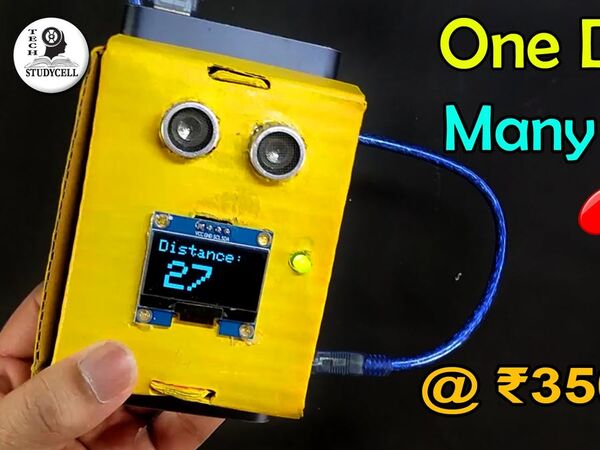
Social Distancing tool using Ultrasonic sensor and Arduino
"We can easily maintain social distancing with this circuit. It shows the distance in OLED & starts buzzer when the distance becomes low. In this project, we will discuss how to measure distance using ultrasonic sensor HCSR04 and Arduino with circuit diagram and Arduino code. This HC-SR04 sensor and Arduino circuit also can be used as a touchless doorbell or distance measuring tool. " [...]
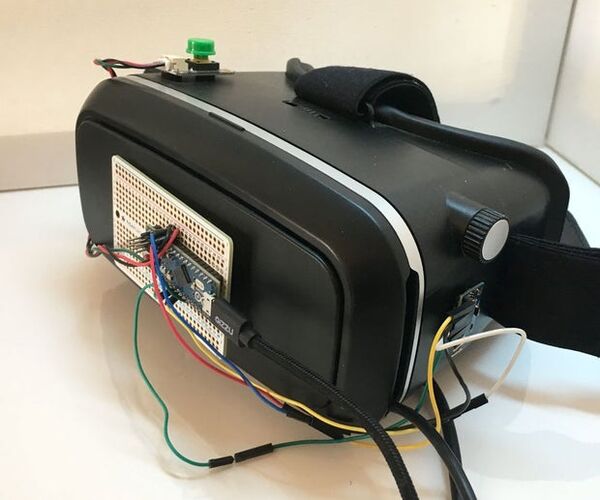
Diy Vr Headset For $80
"My initial goal was to do this for under $150(USD), however after shopping around and changing some parts out for alternatives I managed to get this down to around $80. So let us get started. The parts required are: Toggle Flick Switch 2x LED 1x resistor 150 Ohm 1x Micro USB cable (at least 2 meters long) 1x HDMI Cable (thin ones work best as they hinder movement less, also at least 2 meters long) Some jumper wires DC Adapter plug 5V 3A (Raspberry Pi compatible one works great) Push Button Google Cardboard Compatible VR Headset (I recommend one with a phone compartment door that opens as it gives better access than the ones which uses a tray that slides in) 6DOF MPU 6050 3Axis gyroscope and accelerometer Arduino Micro (can use off-brand alternative) 5inch RaspberryPi LCD Screen 800×480 with HDMI interface Supplies: Toggle Flick Switch 2x LED 1x resistor 150 Ohm 1x Micro USB cable (at least 2 meters long) 1x HDMI Cable (thin ones work best as they hinder movement less, also at least 2 meters long) Some jumper wires DC Adapter plug 5V 3A (Raspberry Pi compatible one works great) Push Button Google Cardboard Compatible VR Headset (I recommend one with a phone compartment door that opens as it gives better access than the ones which uses a tray that slides in) 6DOF MPU 6050 3Axis gyroscope and accelerometer Arduino Micro (can use off brand alternative) 5inch RaspberryPi LCD Screen 800×480 with HDMI interface" [...]
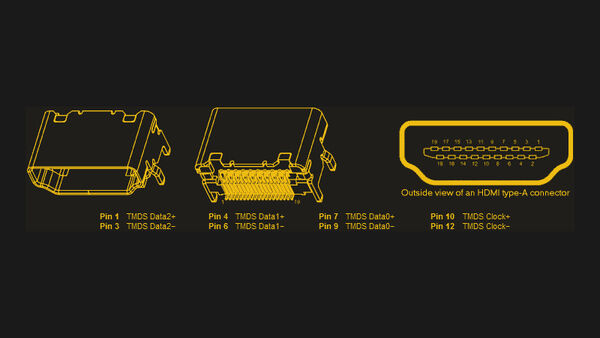
Send video/audio over HDMI on an FPGA
"SystemVerilog code for HDMI 1.4b video/audio output on an FPGA. Why? Most free and open source HDMI source (computer/gaming console) implementations actually output a DVI signal, which HDMI sinks (TVs/monitors) are backwards compatible with. To support audio and other HDMI-only functionality, a true HDMI signal must be sent. The code in this repository lets you do that without having to license an HDMI IP block from anyone. " [...]
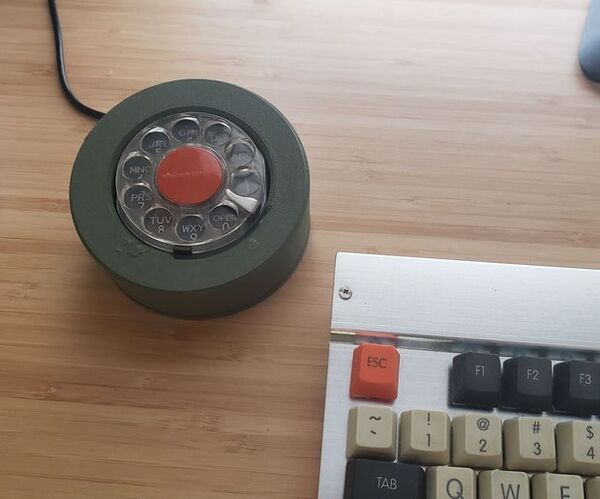
Vintage Rotary Phone Dial PC Volume Control
"If you're anything like me, you find yourself changing the volume on your computer quite often. Some videos are louder than others, sometimes you want the volume muted on your computer while you listen to podcasts or music, and you might need to quickly turn the volume down if you receive a phone call. If you don't have media controls built into your computer, then you can turn a vintage rotary phone dial into a volume control for your Windows PC. This volume control device plugs into your computer through USB, and will automatically set every open program's volume to whatever number you dial. If you dial a "2," the volume will be set to 20%. Dial an "8" and it will be set to 80%." [...]
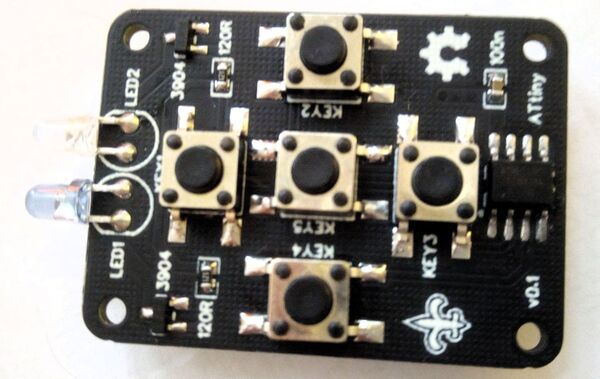
ATtiny13 TinyRemote SMD
"IR remote control based on an ATtiny13A powered by a CR2032 or LIR2032 coin cell battery. The code is a full implementation of the NEC protocol using only 370 bytes (36%) of program memory. " [...]
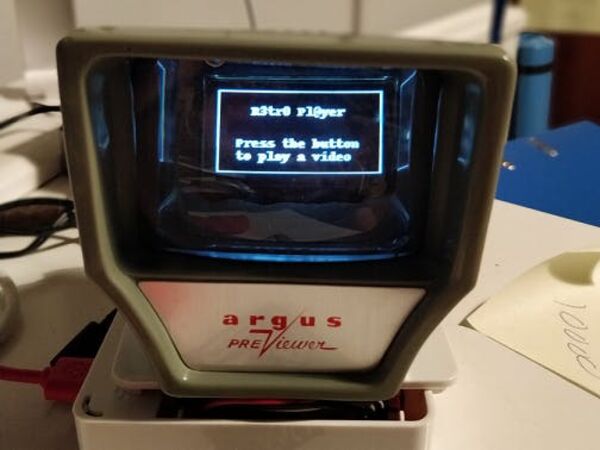
Raspberry Pi Retro Player
"Raspberry Pi Retro Player This Raspberry Pi project is called “Raspberry Pi Retro Player” or RPRP which is RP squared, and it consists of a cheap OLED display that is mounted inside an old Argus slide magnifier. I've had the Argus viewer for a few years, and I bought it from either a charity shop or a summer fete for £0.50. I tried to get it to work a few years ago but for some reason could not and gave up. However, I came across an OLED set up guide by Souvik Saha https://www.hackster.io/souvik-saha) which was clear and simple and easy to follow. It inspired me and I thought I would give the project another try. " [...]
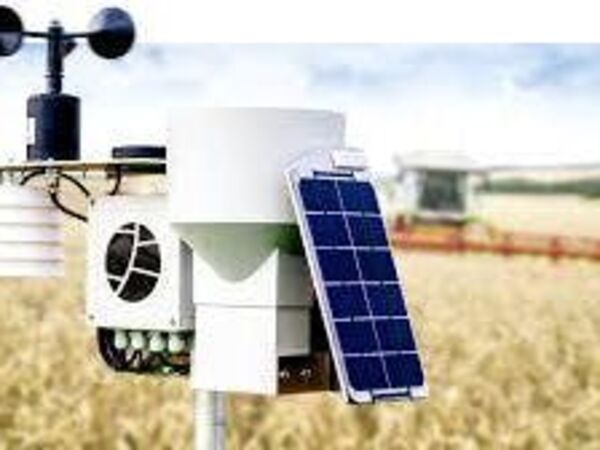
Smart Weather Station
"Monitor the temperature from indoor without going outdoors A weather station is a facility, either on land or sea, with instruments and equipment for measuring atmospheric conditions to provide information for weather forecasts and to study the weather and climate. The measurements taken include temperature, atmospheric pressure, humidity, wind speed, wind direction, and precipitation amounts. So today we are going to make a working prototype of it which helps us to find the temperature and dew. This project works on the principle of Bluetooth master and slave modes. Come on let’s get started" [...]
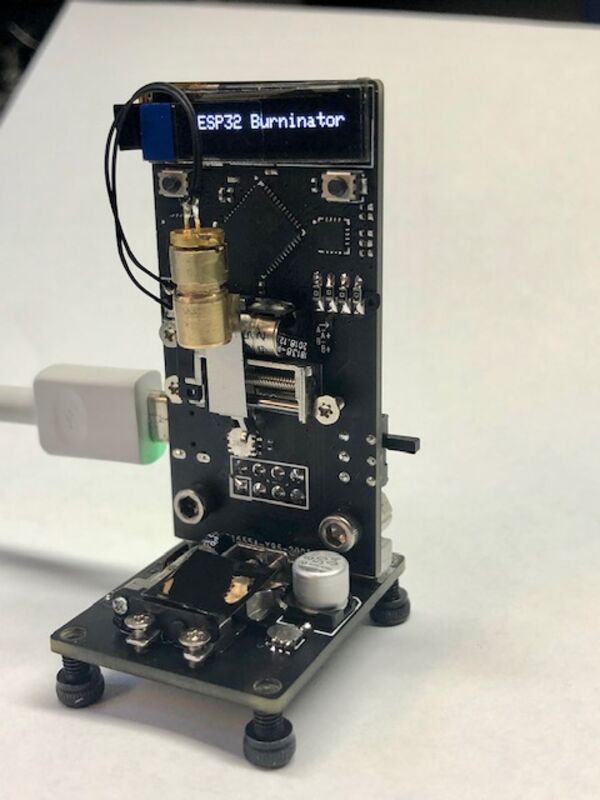
ESP32_Burninator
"An ESP32 project using two linear stepper motors and a burning laser diode. I came up with the project name from being a longtime fan of the homestarrunnerdotcom videos. Please don't sue me. The project started when I grabbed a few tiny linear stepper motors from Aliexpress link and wondered what I could do with them. They lack strength to cut material or draw using a pen but they should be able to hold dvd buring laser diode. A tiny adjustable lens from Aliexpress link was needed used to focus the burn height." [...]
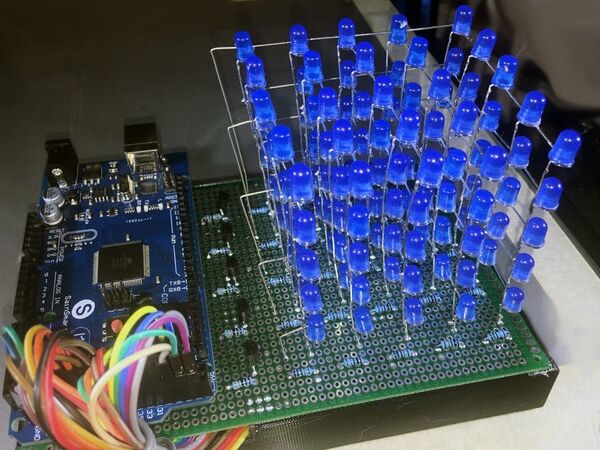
5 x 5 x 5 LED Cube
"An easy to build LED cube with great animations that makes it worth the effort to build Most people love LED cubes, but big ones, like 8x8x8, are a lot of work both to build and to program. Small ones (3x3x3 or 4x4x4) are easy to build, both because they don't require large numbers of LEDs, but also because they don't require external hardware like shift registers and high-side drivers to manage the cube. But they really aren't the same as a big cube. My objective from the start of this project was to create an easy to build cube and then create enough cool software to make it possible to enjoy the feel of a big cube without all the drudgery required to build a big one. So this is a 5x5x5 cube that can be powered directly by an Arduino Mega without any auxiliary hardware other than 5 transistors (used to pull a whole layer - the cathodes of 25 LED's, to ground). I have written a whole lot of code for big cubes in the past, so I have adapted a bunch of existing cube animations to run on this 5x5x5 cube." [...]
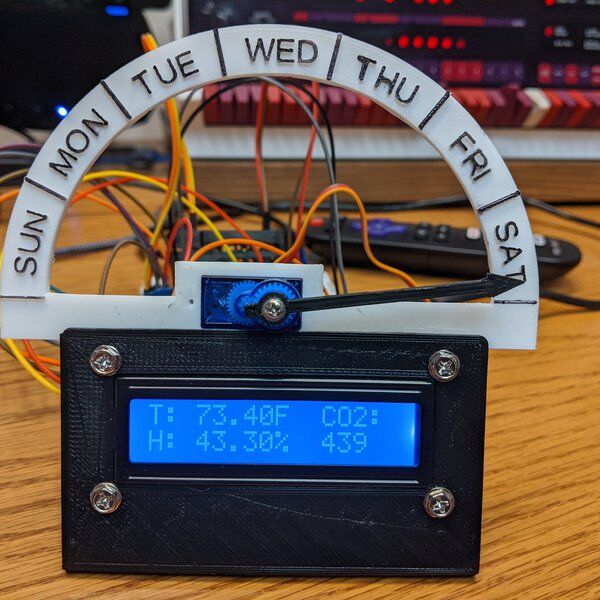
Pandemic Dayclock with Indoor Air Quality Sensors
"Pandemic DayClock, with temperature, humidity, and CO2 sensors. With web interfaces to access the data (HTML/XML/JSON). Also OTA update capability. I saw https://hackaday.com/2020/04/08/what-day-is-it/ and printed both the hemisphere clock and pointer. I wanted to have some progress during the day, instead of an update once per day, so I started updating the code to provide an hourly update of the pointer. Then it went off the rails..." [...]
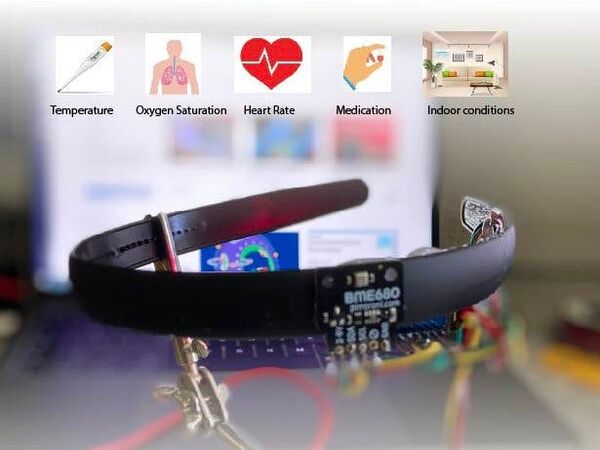
MultiSenseCrown
"Advanced but yet affordable end-to-end medical remote monitoring solution of patient vitals and influence by the indoor air quality. Story Contextual Pandemic As everyone experienced lately the biggest stress is provoked by not knowing what is going on. Not able to distinguish properly symptoms and developing fear in the people around and experience isolation. MultiSenseCrown can help you put dots together and get a more insights on yourself and environment you live in and get faster remote medical support. Indoor conditions influence the evolution of the disease There is strong evidence for aerosols as an important mode of coronavirus transmission, most of which occurs indoors, and that indoor measures to slow the spread are often easily implemented at relatively low cost. The spread of aerosolized SARS-CoV-2, the virus that causes COVID-19, inside public buildings could be suppressed using engineering controls such as effective ventilation, possibly with air filtration and disinfection and avoidance of air re-circulation and overcrowding." [...]
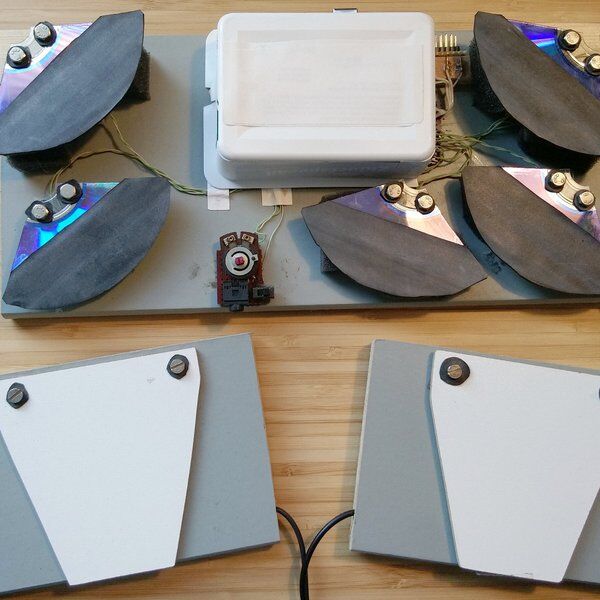
An Arduino based standalone drum kit
"Here is an electronic drum kit where an Arduino Uno does all the sounds. This is achieved without audio hat and without extra storage. Most Arduino based drum kits use the Arduino as input listener and midi controller for a connected midi sound device. I was wondering whether the Arduino alone can be both, controller and sound device, even with only 32KiB of memory. Turns out, it can! With some trickery and clever programming that is." [...]
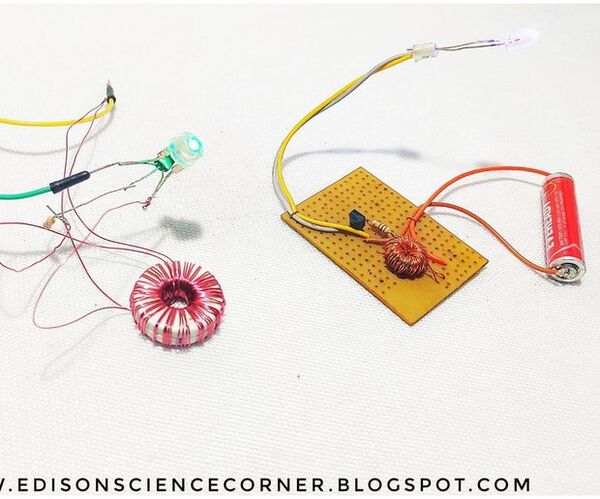
How to Make Joule Thief Circuit
"in this tutorial, lets build a joule thief circuit" [...]
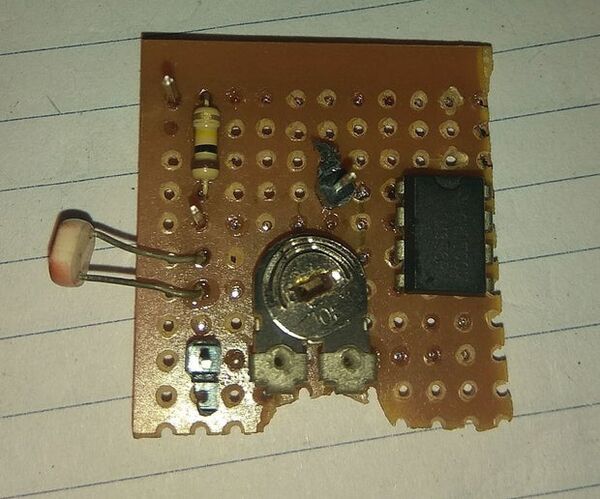
LDR Based Light Sensor/Detector
"Light sensors and detectors are extremely useful for microcontrollers and embedded systems and intensity monitoring is also to be done. One of the simplest and cheapest of such sensors are LDR. LDR or Light Dependent Resistors can be easily used with an opamp as comparator and detection of light can be done. An LDR is a component that has a (variable) resistance that changes with the light intensity that falls upon it. This allows them to be used in light sensing circuits.The most common type of LDR has a resistance that falls with an increase in the light intensity falling upon the device (as shown in the image here). The resistance of an LDR may typically have the following resistances: Daylight = 5000Ω and less Dark = 20000000Ω You can therefore see that there is a large variation between these figures." [...]
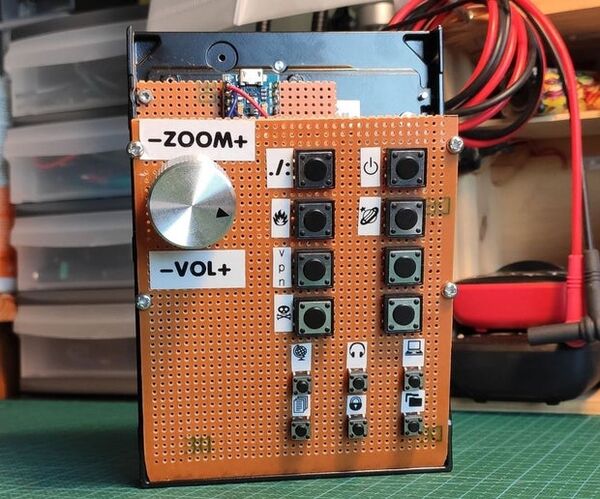
Programmable Keypad
"In this project I'll show how to make relatively simple and inexpensive programmable keypad for mapping your most used keyboard shortcuts, applications and more. This keypad is detected as keyboard in all major OS, no additional drivers needed. Supplies: Rotary encoder. Lots of (depends on your needs) push buttons. Arduino Pro Micro, Arduino Leonardo or any other dev board with Atmega32U4 MCU. Wire, solder, soldering iron, etc." [...]
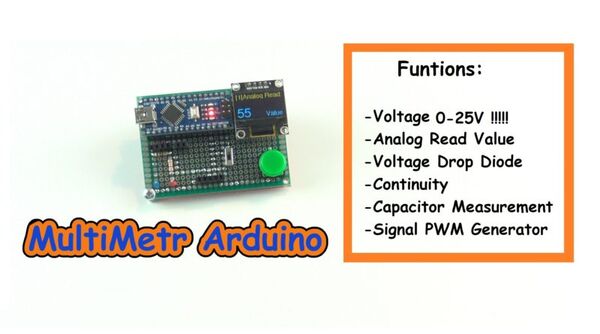
MultiMeter Arduino nano and OLED i2c 0.96″
"Hi, every electronics needs a multimeter, you can buy it or make it yourself at home. Today I will show you how to make a multimeter with arduino nano and an oled display at home. Functions: Voltmeter 0 to 25 Volt!!!!! Analog Read Value Voltage Drop Diode Continuity circuit Capacitor Measurement Signal PWM Generator Analog pins can measure a voltage not exceeding the supply voltage, but you can increase the measured voltage by using a voltage divider. I used 7.5K and 30K ohms resistors, With a 5 volt microcontroller supply voltage (NOT ARDUINO, Arduino has a voltage stabilizer connected to the Vin pin) maximum voltage we can connect 25 volts. " [...]
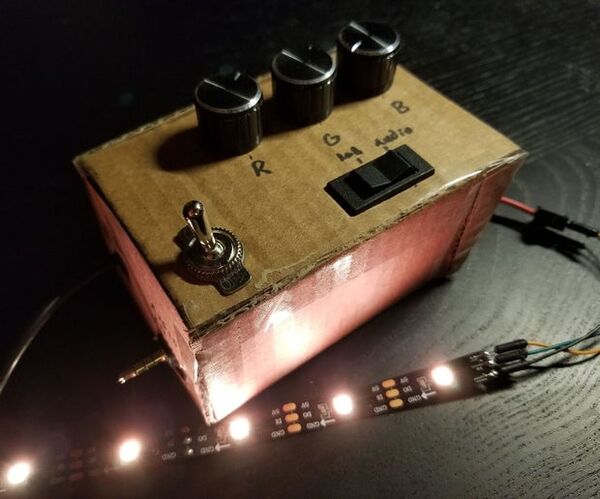
Music Reactive Mood Lights
"Back in freshman year (Spring of 2019), I wanted to spruce up my dorm room. I came up with the idea of building my own mood lights which would react to the music I listened to on my headphones. Frankly, I had no particular inspiration, I just thought they looked cool. In the heat of finals season, I cobbled together an LED strip controller that could react to audio. It worked, but it was just a breadboard setup, far from anything complete or permanent. Time passed, homework piled up, and that project sank deeper and deeper into my box of unfinished things." [...]
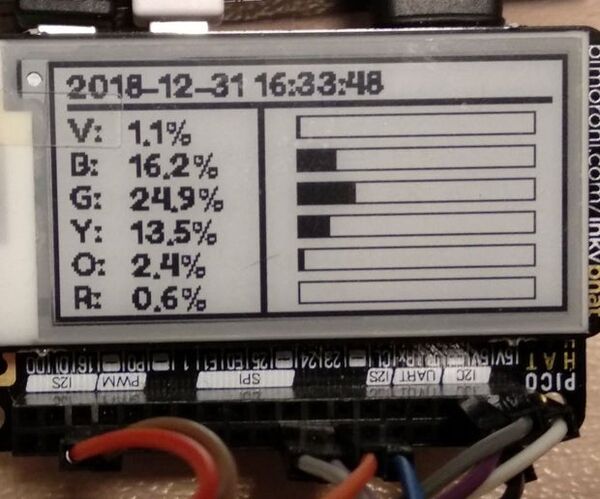
A Raspberry Pi Colorimeter With E-Paper Display
"I had been starting to work on this idea in 2018, being an extension of a previous project, a colorimeter. My intension was to use a e-paper display, so the colorimeter could be used as a stand-alone solution without the requirements for an external monitor, e.g. for class room or field applications. I had some time to play on the project over Christmas vacations 2018/2019, but, while even a draft of the instructable had already been written, a few things I intended to do were still missing. Then I had to concentrate again on the job, had to finish my projects there and started in a new position in April. So I had not much time for silly projects for a while, and finally the project below became one of several ideas and concepts hibernating in my small "Bastelecke" ("tinker corner"?" [...]
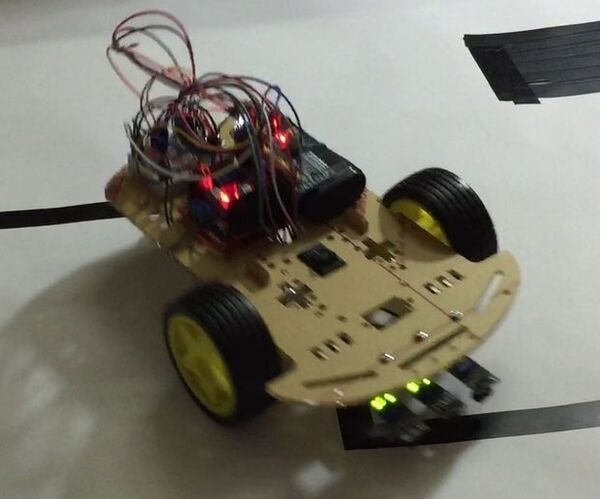
Line Follower Robot With PICO
"Before you're capable of creating a robot that can end civilization as we know it, and is able to end the human race. You first must be able to create the simple robots, the ones that can follow a line drawn on the ground, and here is where you'll take your first step towards ending us all . First of all, a line following robot is a robot that capable of following a line on the ground, and this line usually is a black line drawn on a white background or vise versa; and that is because it is easier for the robot to tell the difference between highly contrasting colors, like black and white. Where the robot changes its angle depending on the color it reads. Supplies: PICO Two-Wheel Drive robot chassis, which have the following: Acrylic chassis 2 DC motors with wheels and encoders Caster wheel with metal standoffs 4 channel battery holder Some screws and nuts On/off switch L298N motor driver module 2 Line tracker sensors 7.4v battery" [...]
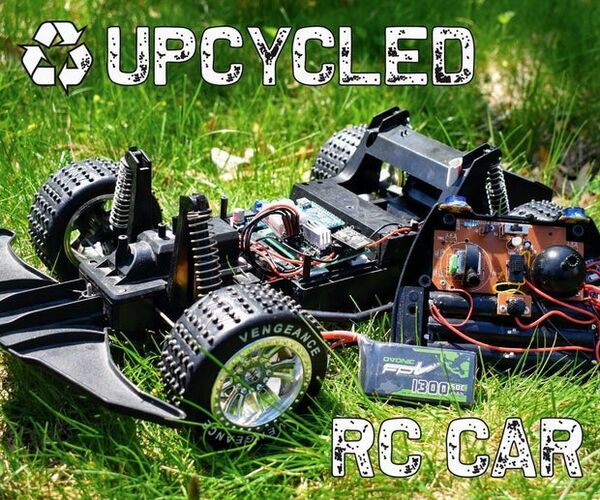
Upcycled RC Car
"RC cars have always been a source of excitement for me. They're fast, they're fun, and you don't have to worry if you crash them. Yet, as an older, more mature, RC enthusiast, I can't be seen playing around with a small, kids RC cars. I have to have big, grown man-sized ones. This is where a problem arises: adult RC cars are expensive. While browsing online, the cheapest I could find cost $320, the average being around $800." [...]
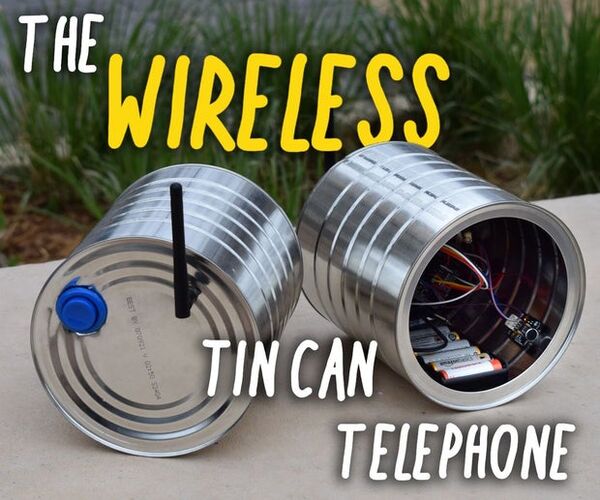
How to Make a Wireless Tin-Can Telephone! (Arduino Walkie Talkie)
"Just the other day, I was in the middle of a very important phone call when my banana phone stopped working! I was so frustrated. Thats the last time I miss a call because of that stupid phone! (In hindsight, I may have gotten a little too angry in the moment, see pics) It was time for an upgrade. Enter the wireless tin-can telephone! The all new and improved gag phone, for all my fake communication needs!" [...]
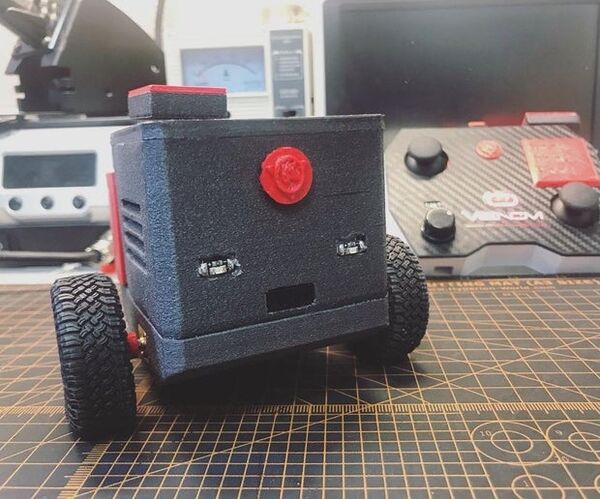
MrK Blockvader
"Over the years, I have seen many interesting 3D printed rover robot projects and I love how 3D printing technology has helped the robotic community to grown more diversity in design and material choices. I want to add a small contribution to the robotic community by publishing MrK_Blockvader on Instructable for the Maker Community. MrK_Blockvader is a fun little robot with tiny buzzer, but don't let the blocky look fools you. He could be equipped with the color sensor, distance sensor, a radio module to communicate with other Blocky with alike capability, with a base or with a controller. MrK_Blockvader will be part of a robot network where one can be assigned as the commander to a group of robots to archive the same objective. Supplies: 1 * Arduino Nano 1 * DC motor driver 2 * DC motor with gearbox 1 * 650 mAh Venom LiPo battery 2 * 1/24 RC truck wheels 2 * White LEDs 1 * Distance sensor 1 * Color sensor 1 * nRF24 breakout board 1 * nRF24 radio board 1 * Buzzer 1 * Switch 1* 26 AUG Black wire 1* 26 AUG Blue wire 1* 22 AUG Black wire 1* 22 AUG Red wire" [...]
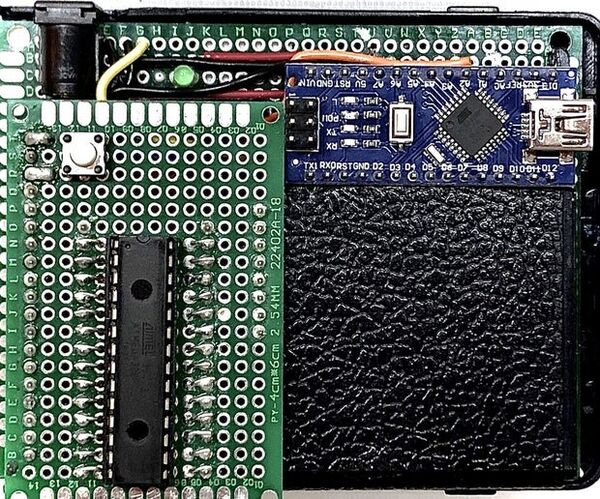
Atmega328P Fuse Reset
"Instruction Manual PDF has all the necessarily files and schematics for the build. Introduction This project uses the Arduino Nano Microcontroller to reset Fuse bytes and erase Flash and EEPROM for ATMEGA 328/328P. By using the Arduino Nano with a BJT, this device will reset the Flash Program memory, EEPROM Data memory, Memory Lock bits, and Fuse bits in the ATMEGA 328/328P using HIGH VOLTAGE PARALLEL PROGRAMMING. Instructions Insert ATMEGA328/328P as shown Connect 12V Power Ready when GREEN LED stops flashing DISCONNECT POWER to avoid frying the Arduino Nano Notes DISCONNECT POWER WHEN UNUSED. For unknown reasons, the voltage regulator on the Arduino Nano (even the original one) heats up and could damage the Nano. This project is targeted for students who are learning to program their ATMEGA chips." [...]
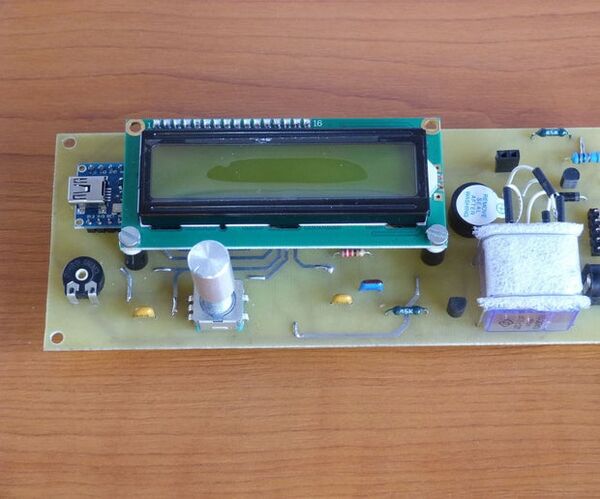
Timer With Arduino and Rotary Encoder
"The timer is a tool often used in both industrial and household activities. This assembly is cheap and easy to make. It is also very versatile, being able to load a program chosen according to needs. There are several programs written by me, for Arduino Nano. The duration of the timer can be entered on the display (1602) from the rotary encoder. By pressing the button on the rotary encoder the timer is triggered.The load will be powered during the time delay via the contacts of a relay." [...]
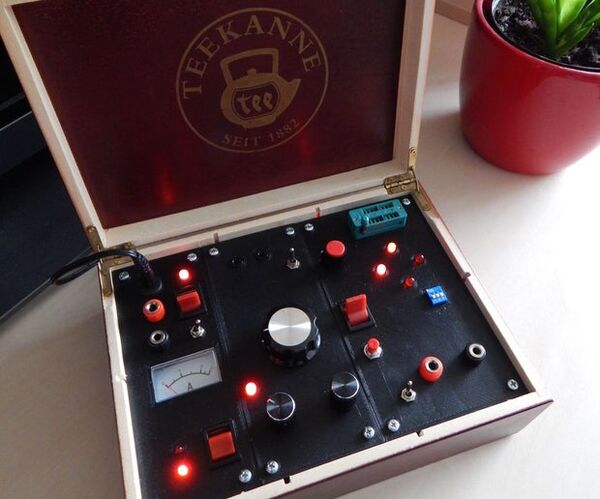
DC and Stepper Motor Tester
"Few months ago, a friend of mine gave me a couple of discarded inkjet printers and copy machines. I was interested in harvesting their power source units, cables, sensors and especially motors. I salvaged what I could and I wanted to test all the parts to make sure they were functional. Some motors were rated at 12V, some at 5V, some were stepper and others were DC motors. If only I had a device, where I could simply connect the motor, set the frequency, duty cycle and select a stepping method to test it. I decided to build it without using digital signal processor, or microcontroller." [...]
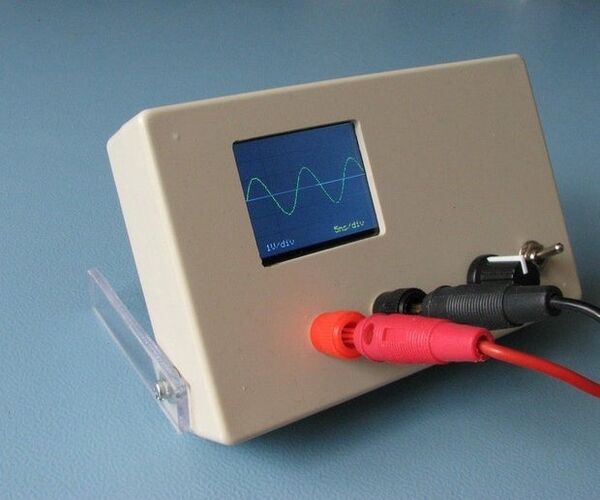
Mini Oscilloscope
"This is an Instructable about a mini oscilloscope I made, it isn't anywhere near as capable as a real (digital) oscilloscope (such as my Rigol) but I think it is nice to have. Even more important, I enjoy making things, even when they have no real use. For an example of that, just look at my "tuning fork oscillator". Browsing the internet I came across some simple diy oscilloscopes, usually made with an Arduino or Arduino compatible board but almost always with the Arduino software. The trouble with these is that an Arduino isn't very fast, its ADC isn't either and the Arduino software certainly isn't known for its speed. So some people added a separate ADC to it, which increases the hardware complexity and the total price." [...]
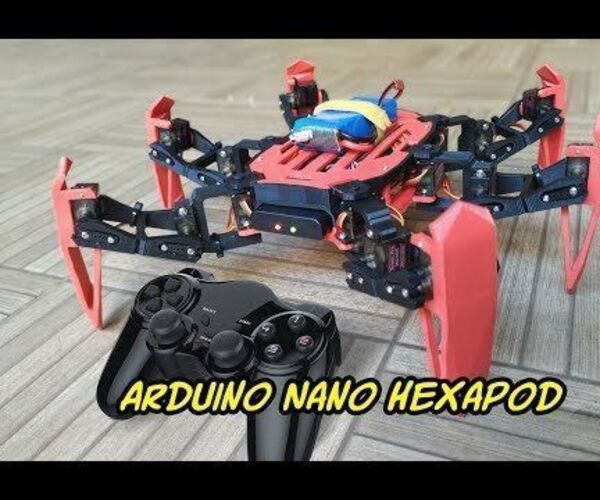
Afordable PS2 Controlled Arduino Nano 18 DOF Hexapod
"Simple Hexapod Robot using arduino + SSC32 servo controller and Wireless controlled using PS2 joystick. Lynxmotion servo controller have many feature that can provide beautiful motion for mimicking spider. the idea is to make a hexapod robot that is easy to assemble and affordable with many features and smooth movements. The component i choose will be small enough to fit in the main body and light enough for MG90S servo can lift... " [...]
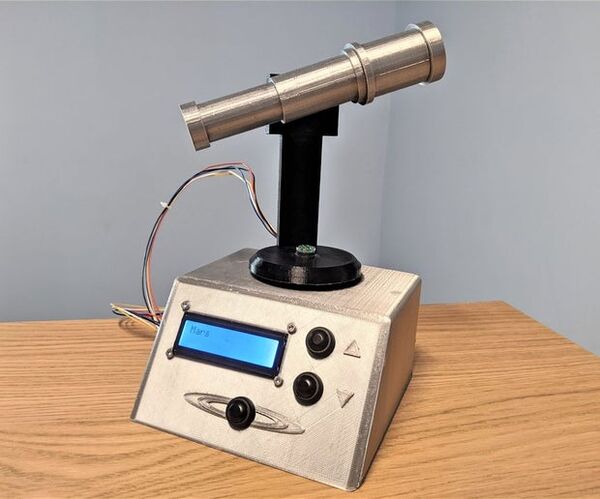
Raspberry Pi Planet Finder
"Outside the Science Centre in my city there is a large metal structure which could turn and point at where the planets were in the sky. I never saw it working, but I always thought it would be magical to know where these unreachable other worlds actually were in relation to my tiny self. When I walked past this long-dead exhibit recently I thought "I bet I could make that" and so I did! This is a guide on how to make the Planet Finder (featuring the Moon) so you too can know where to look when you're feeling awed by space. " [...]
That's all Folks!



